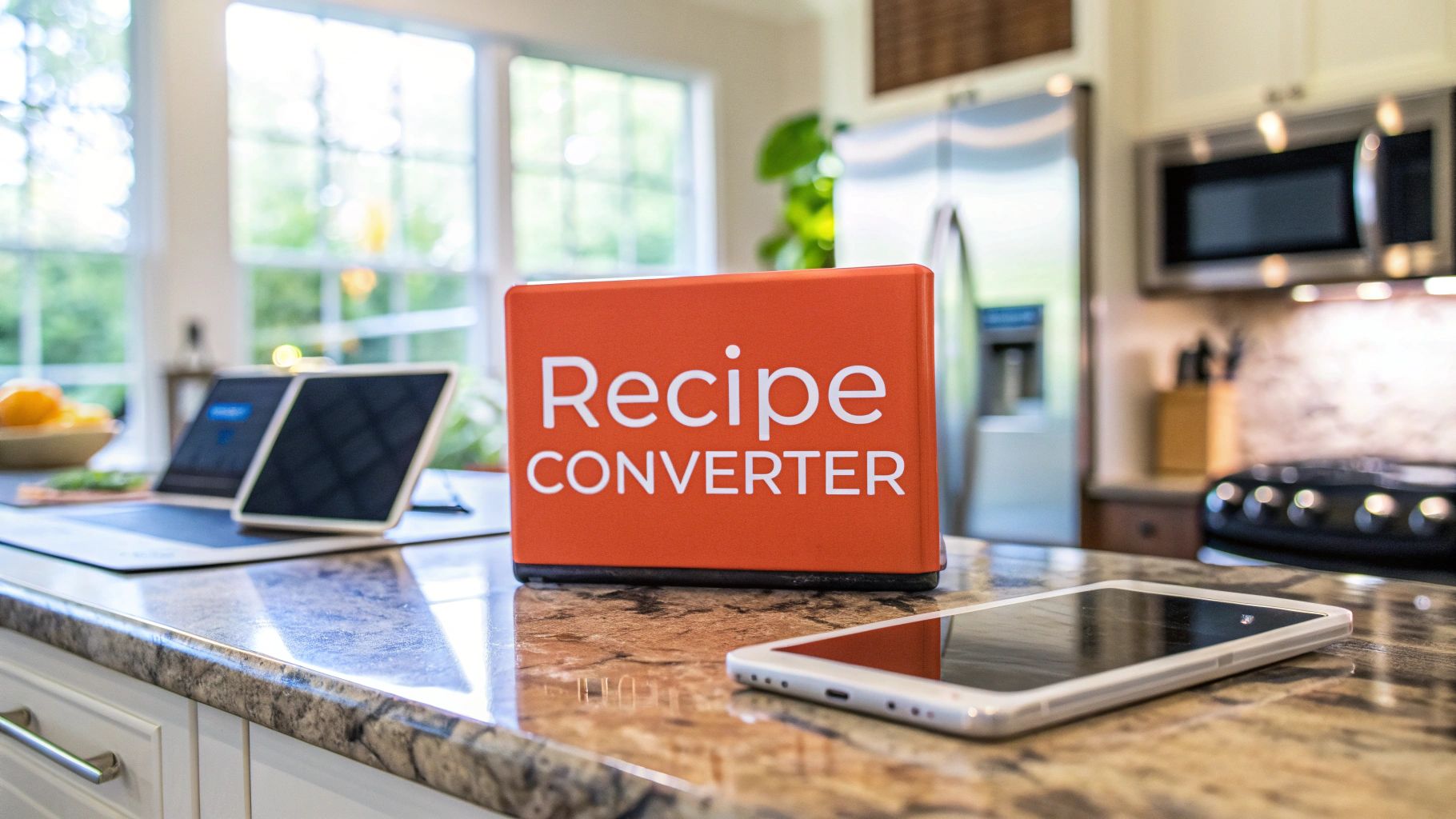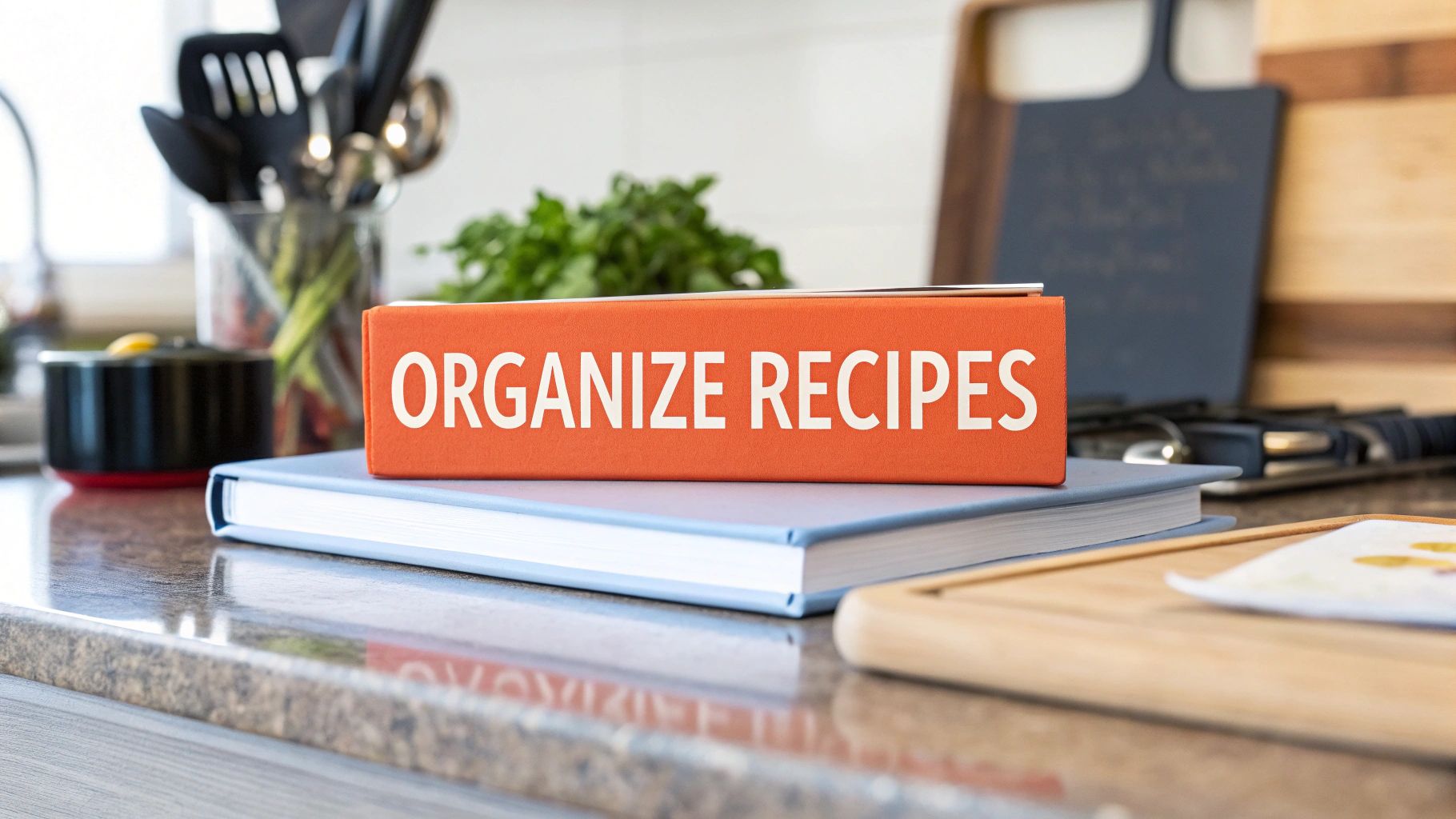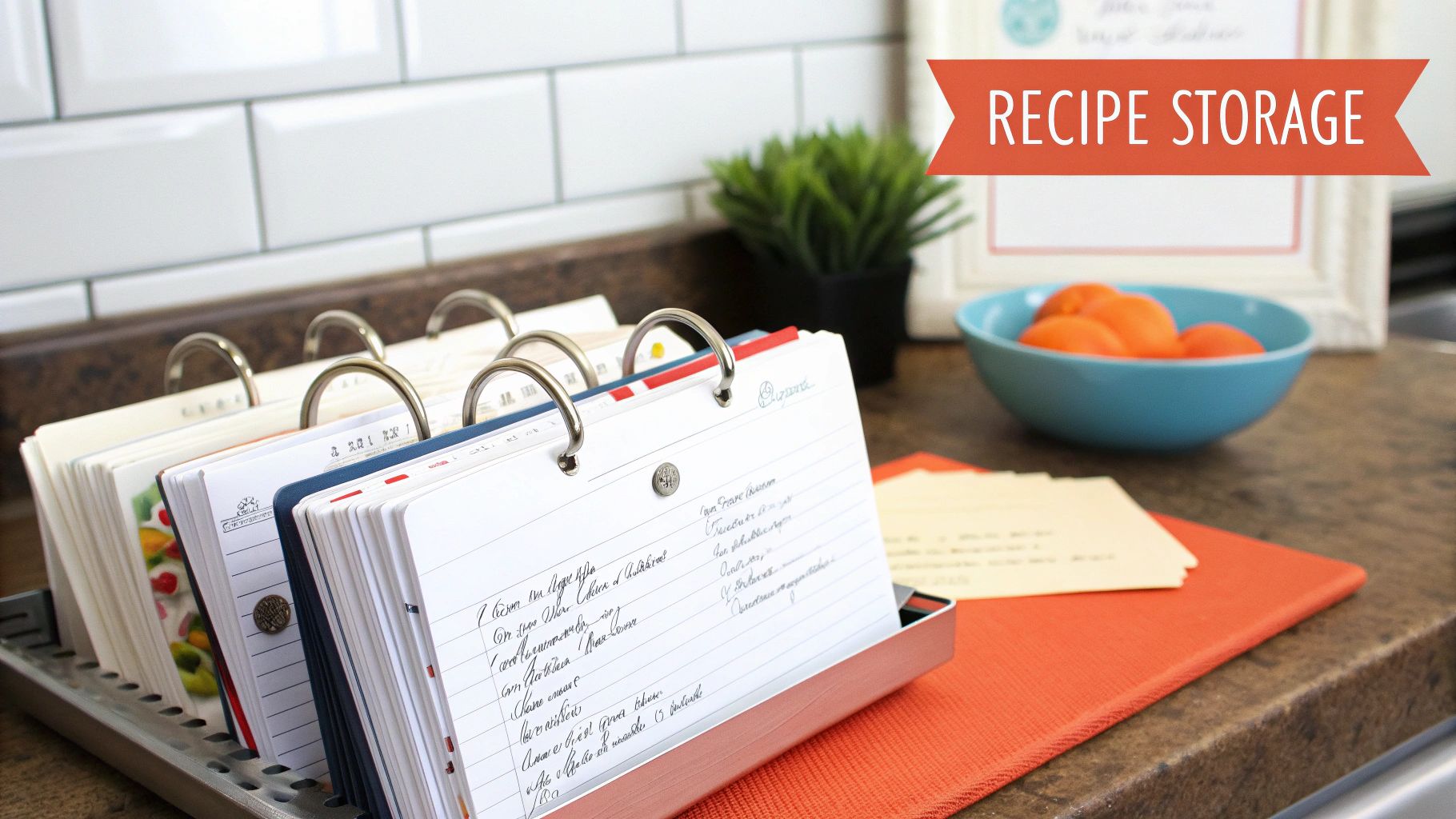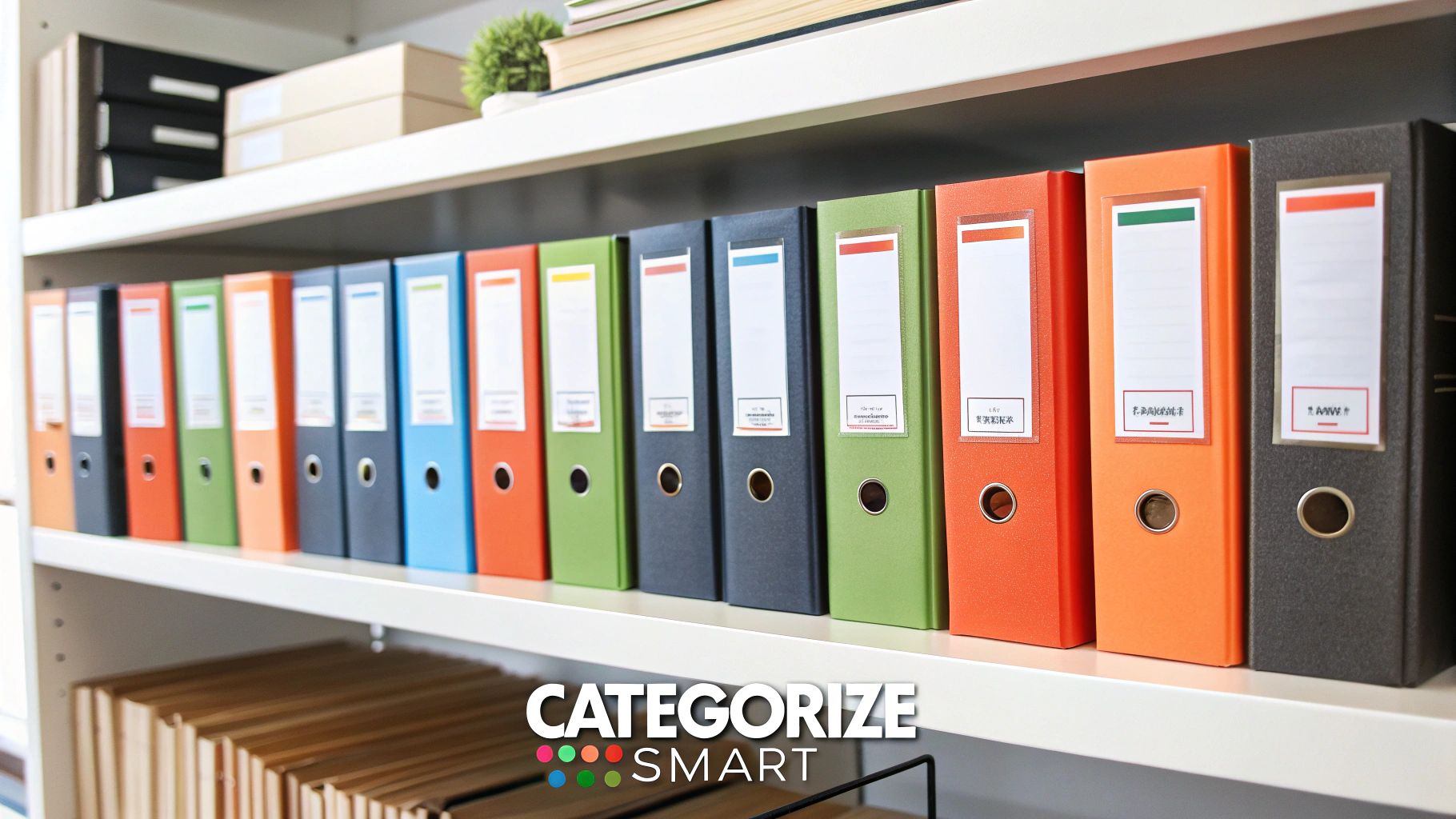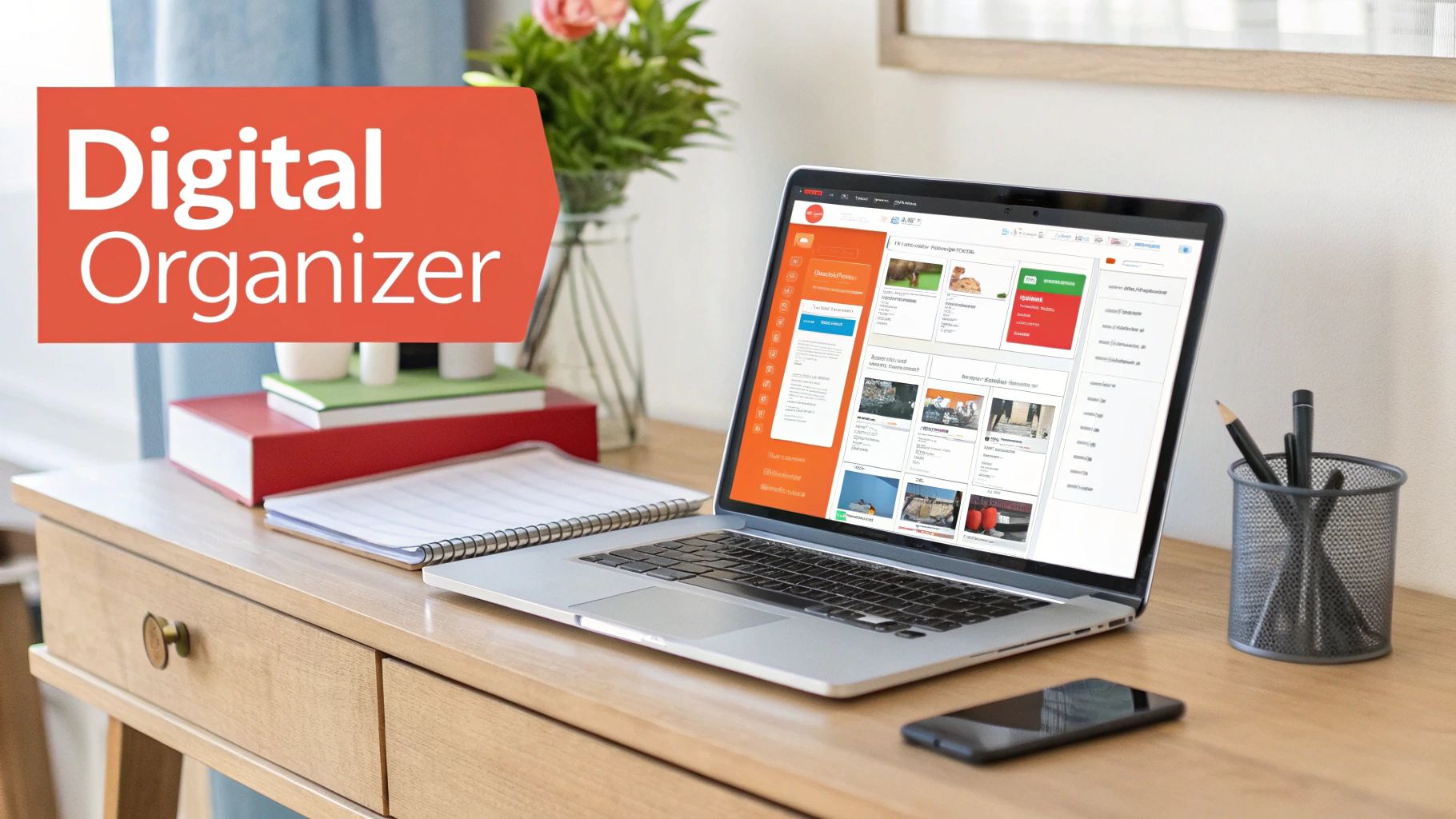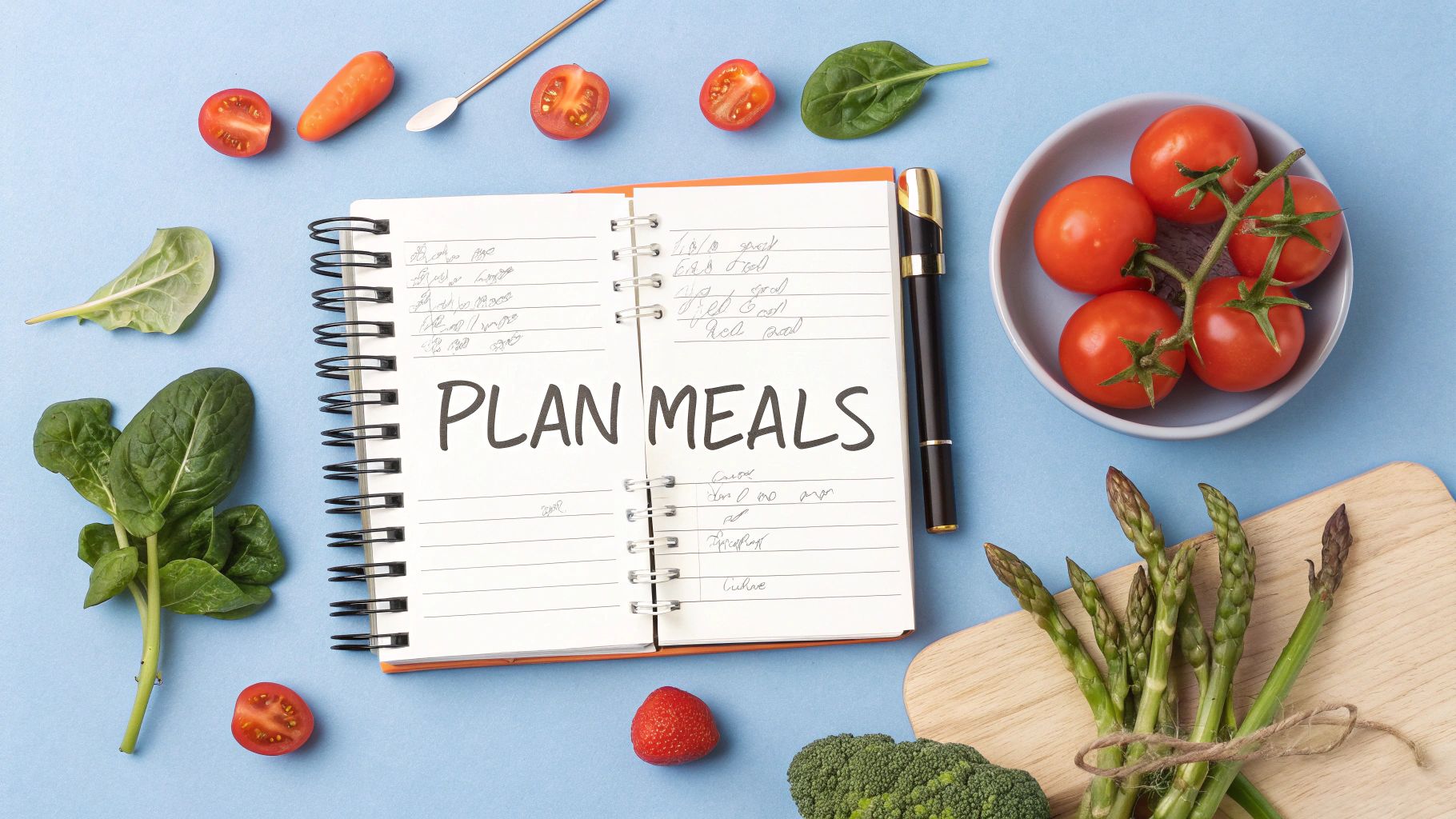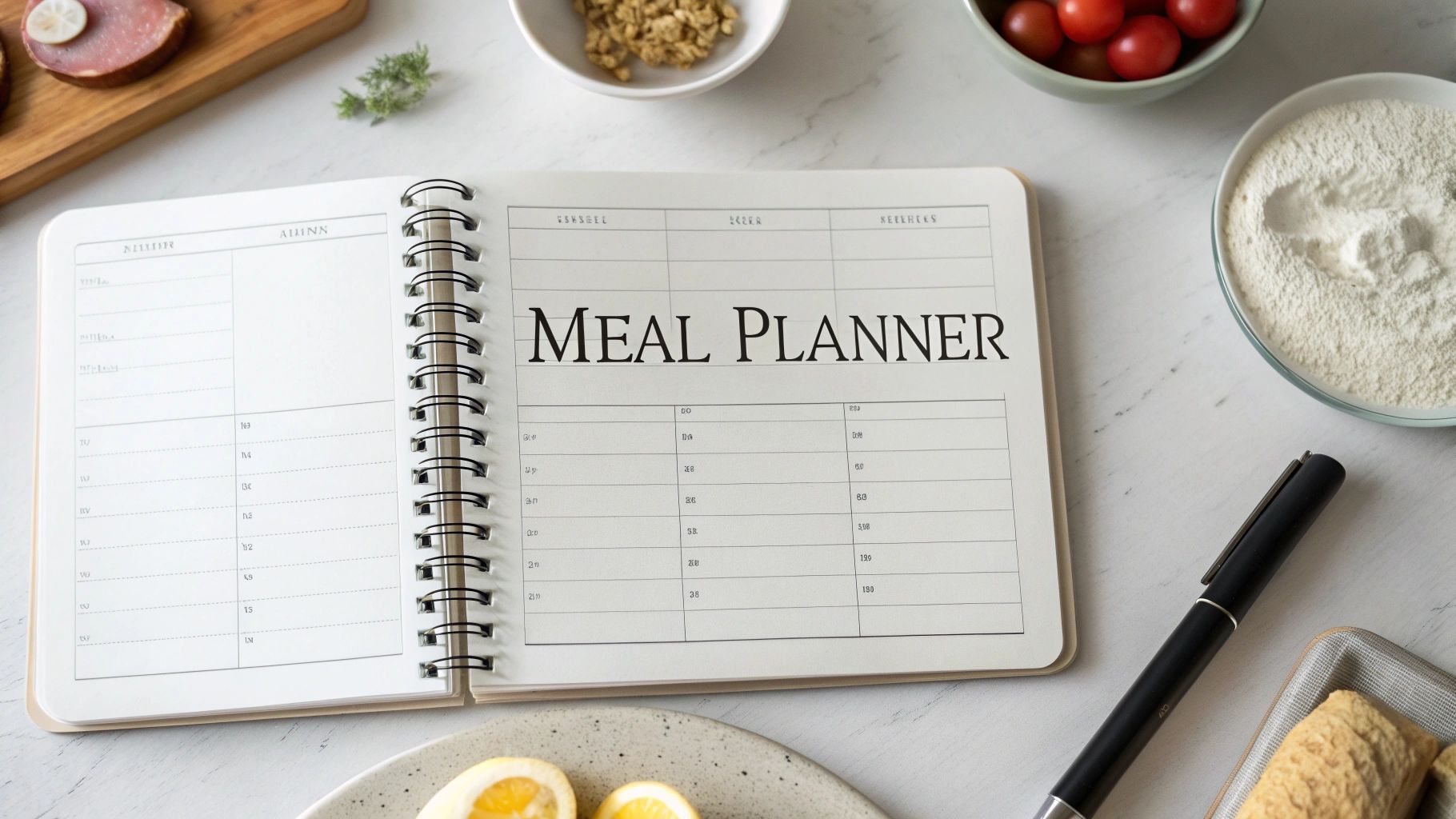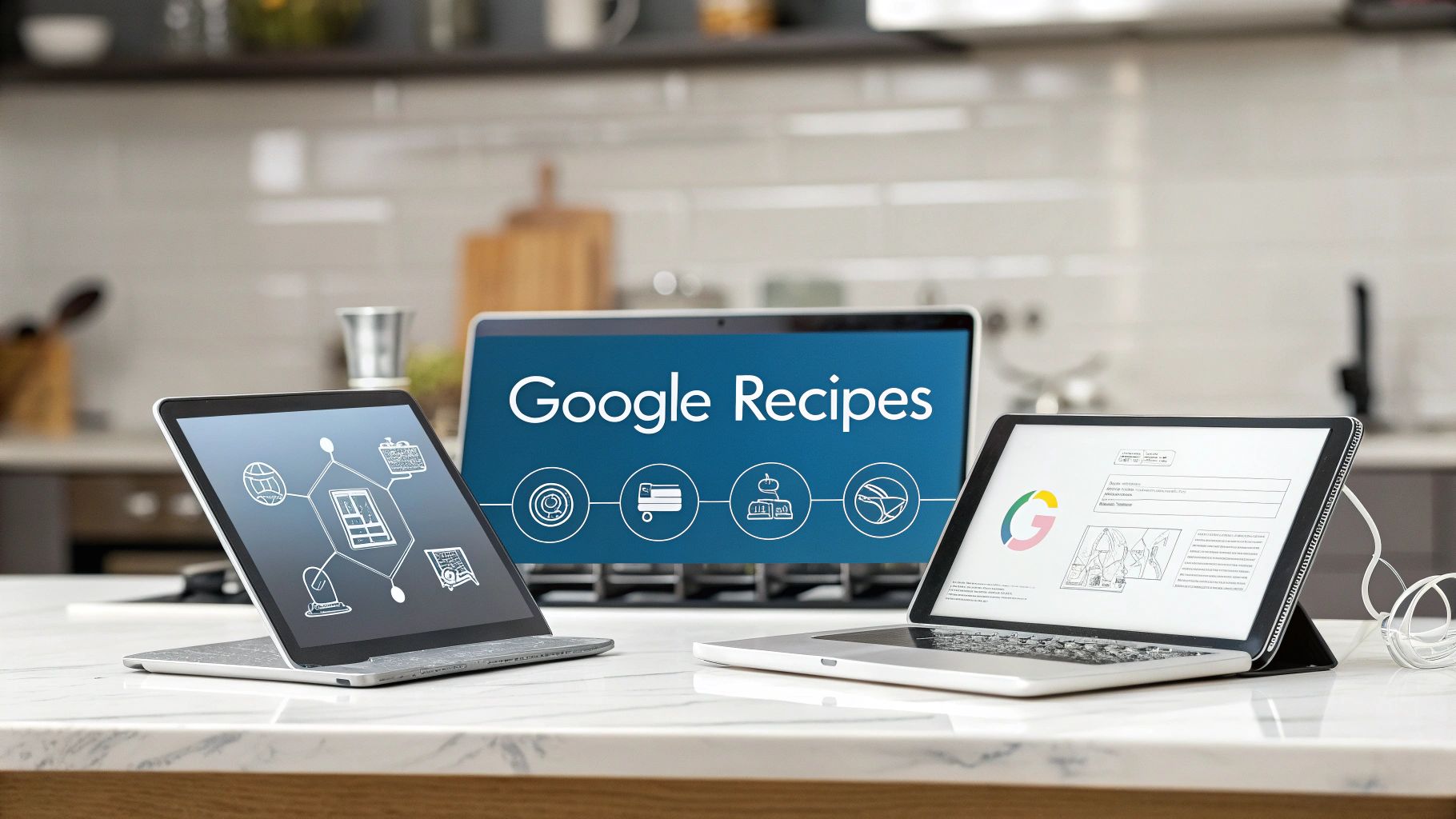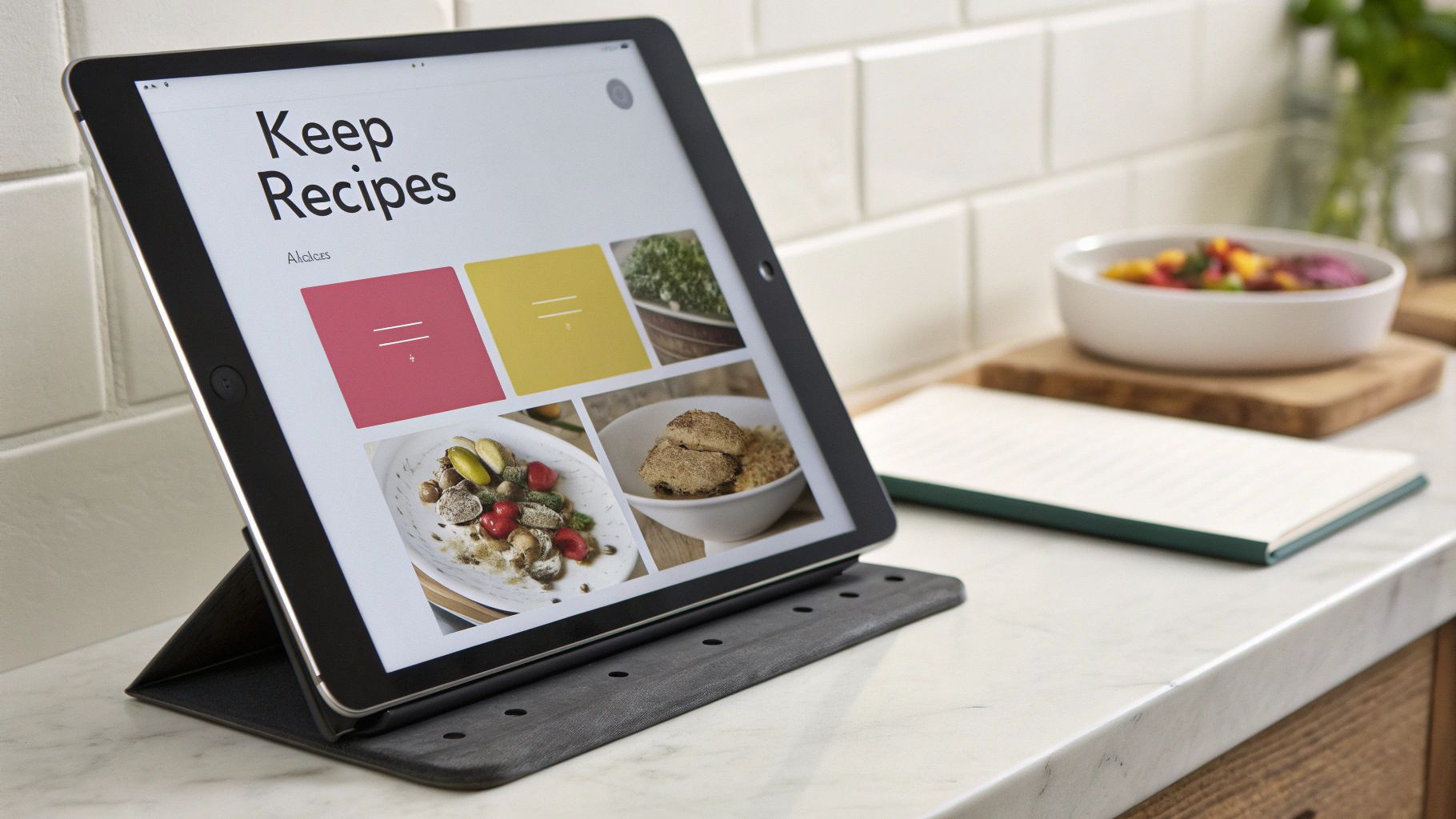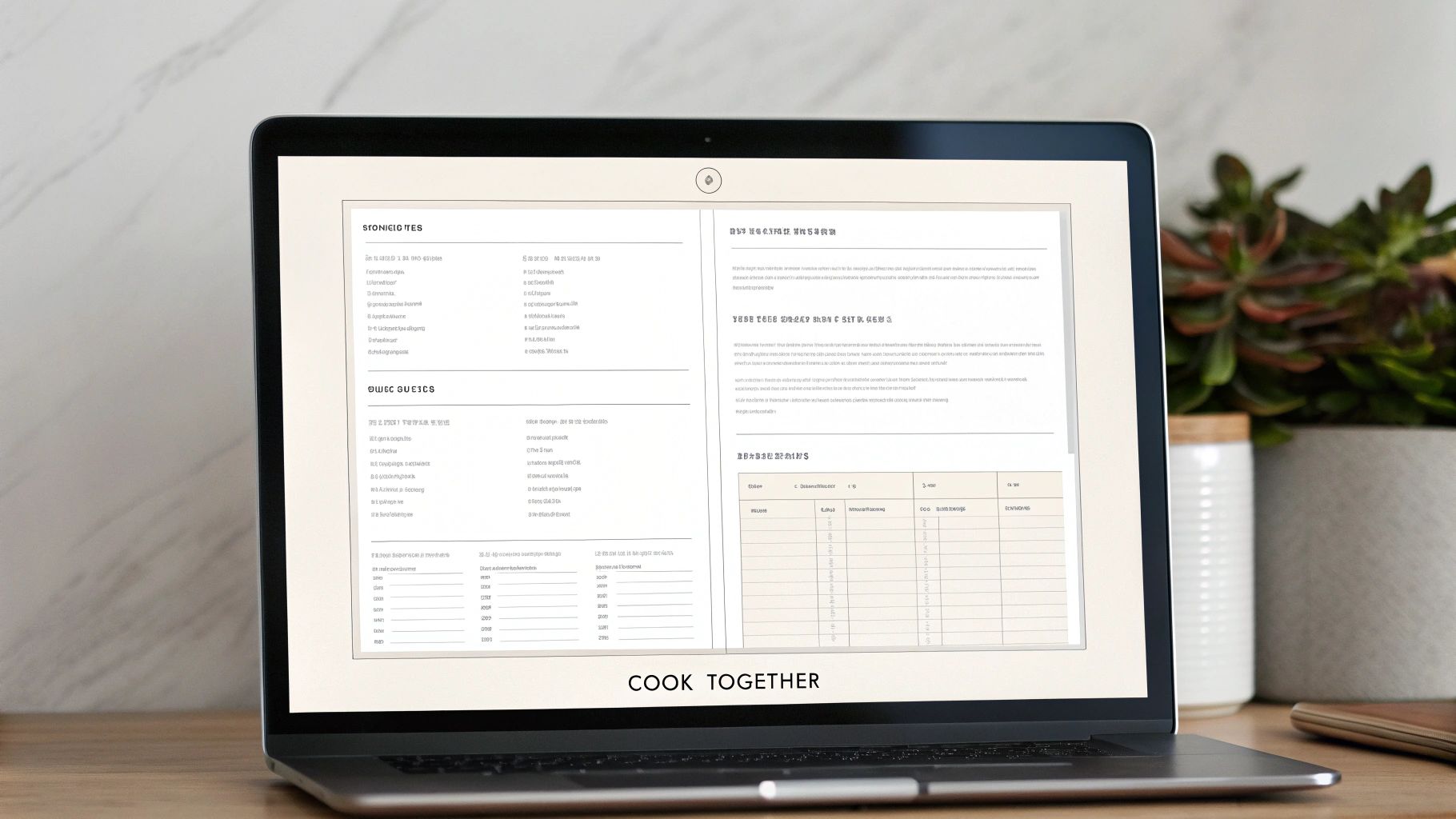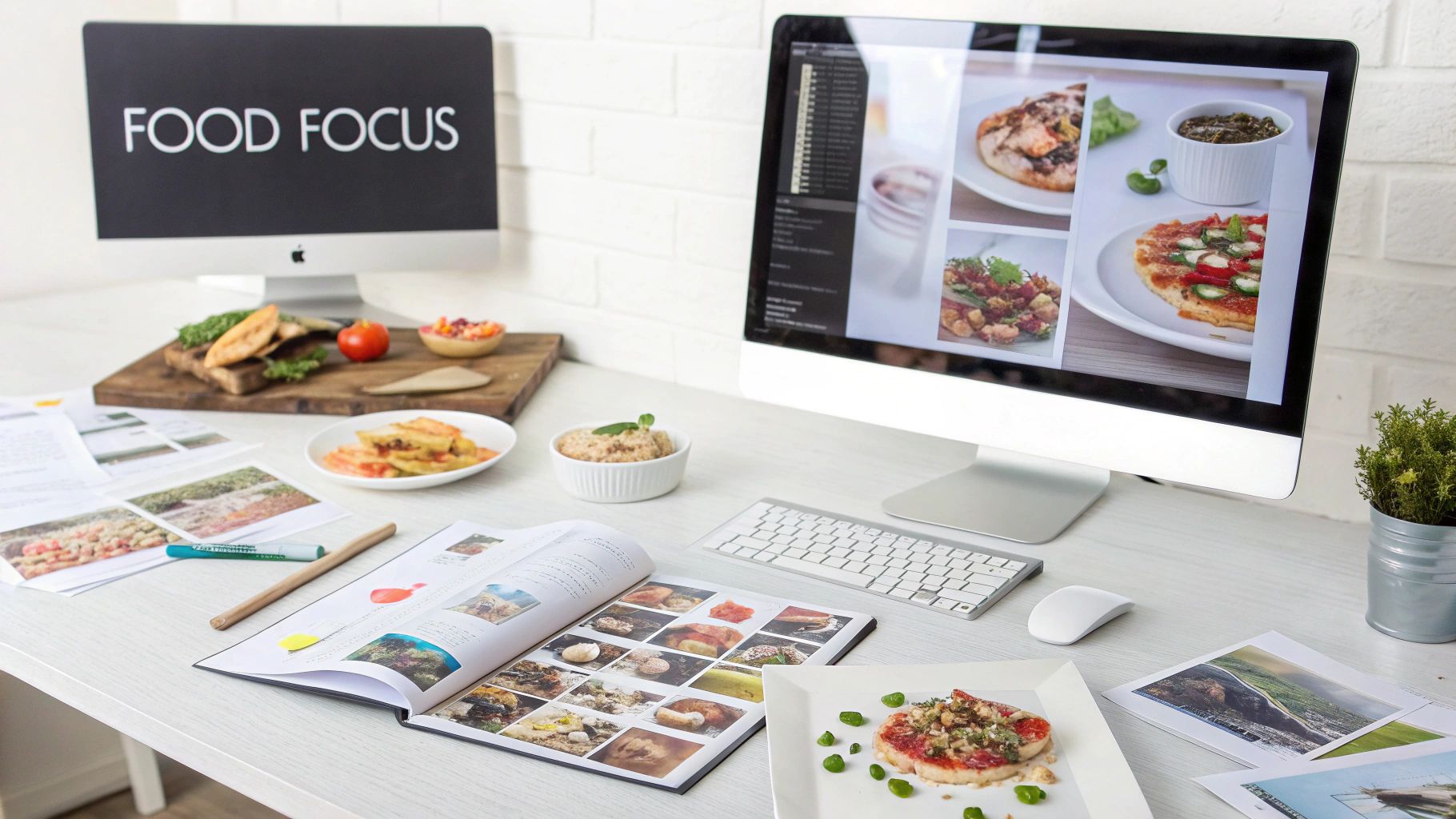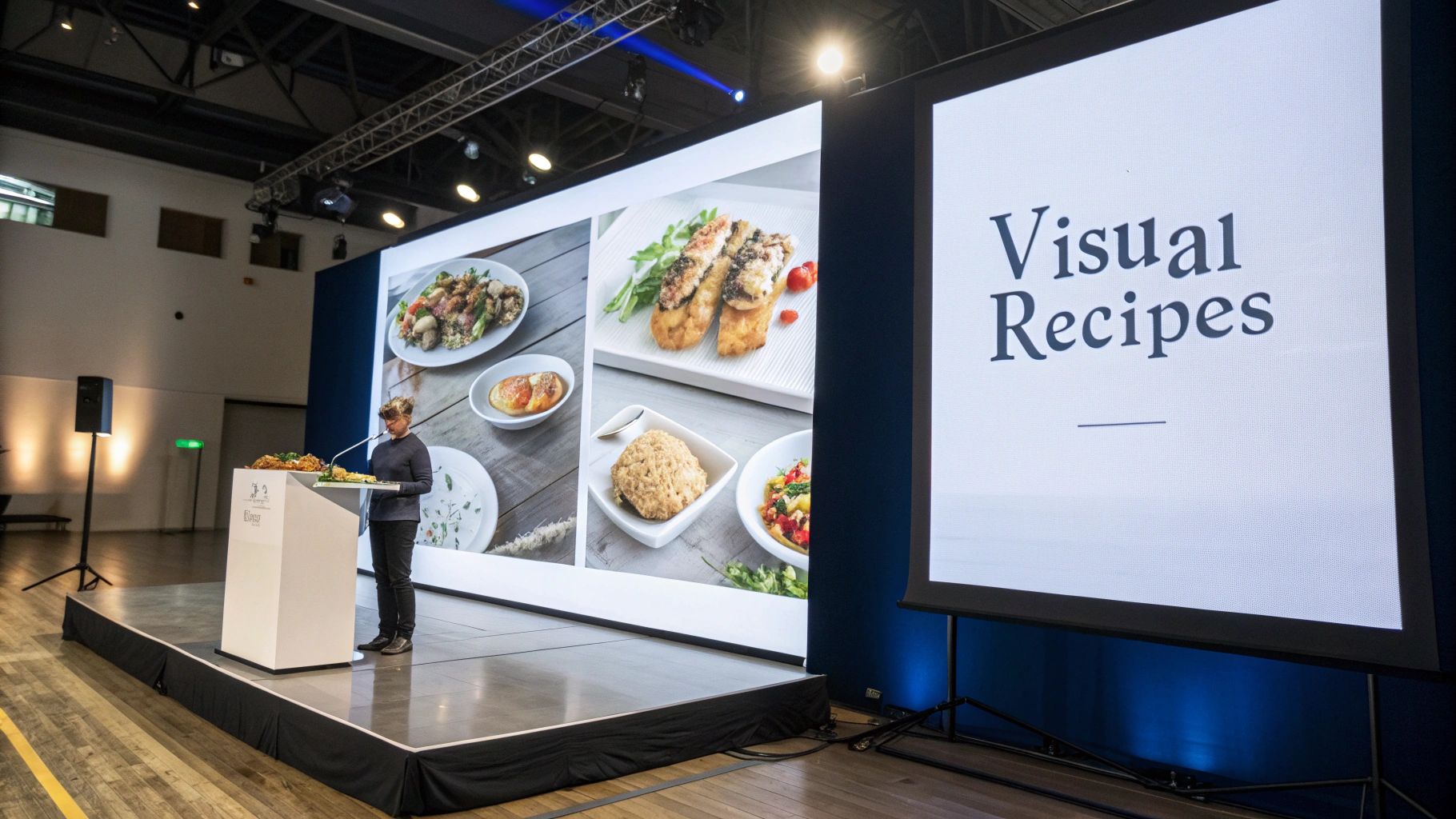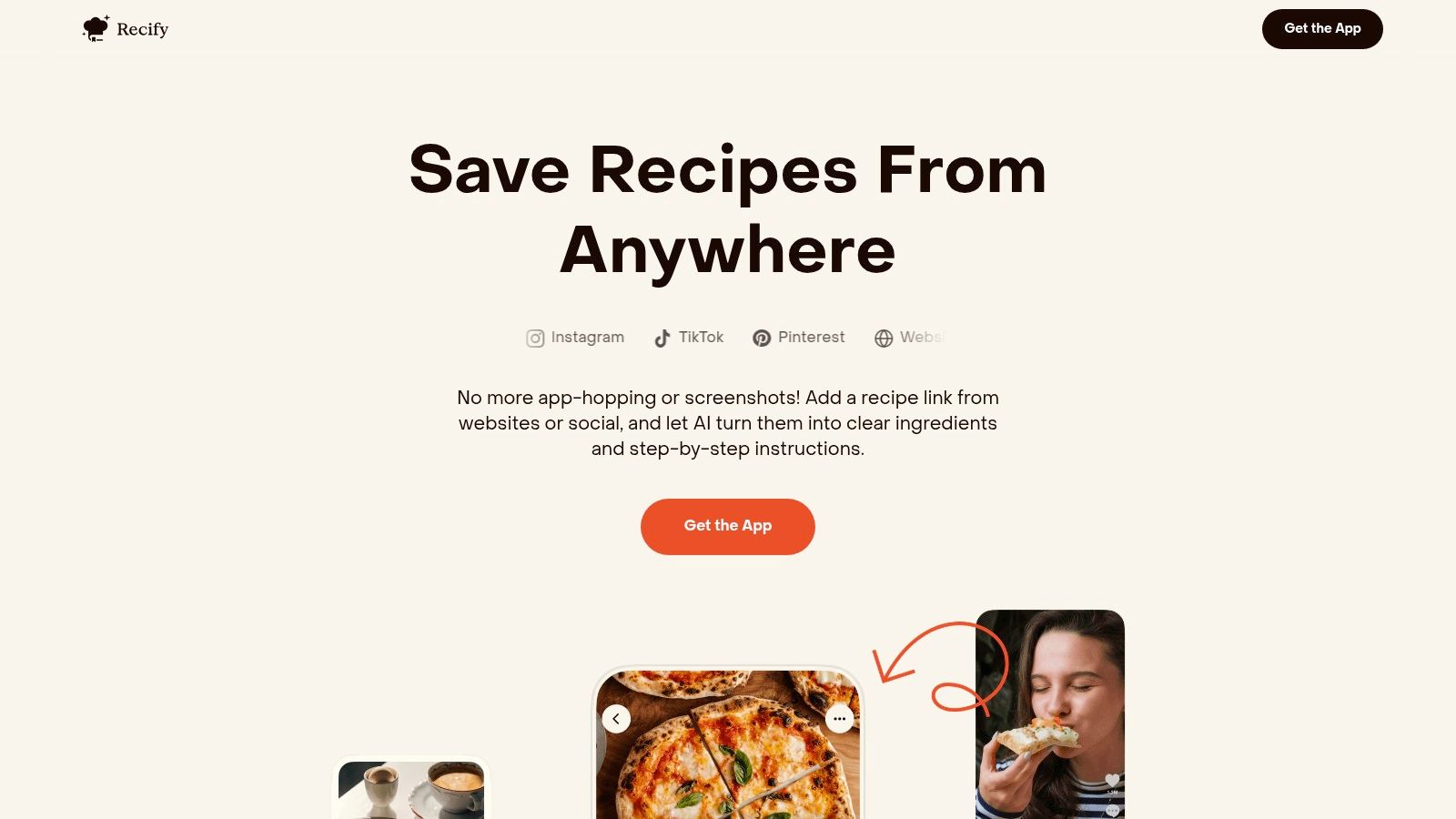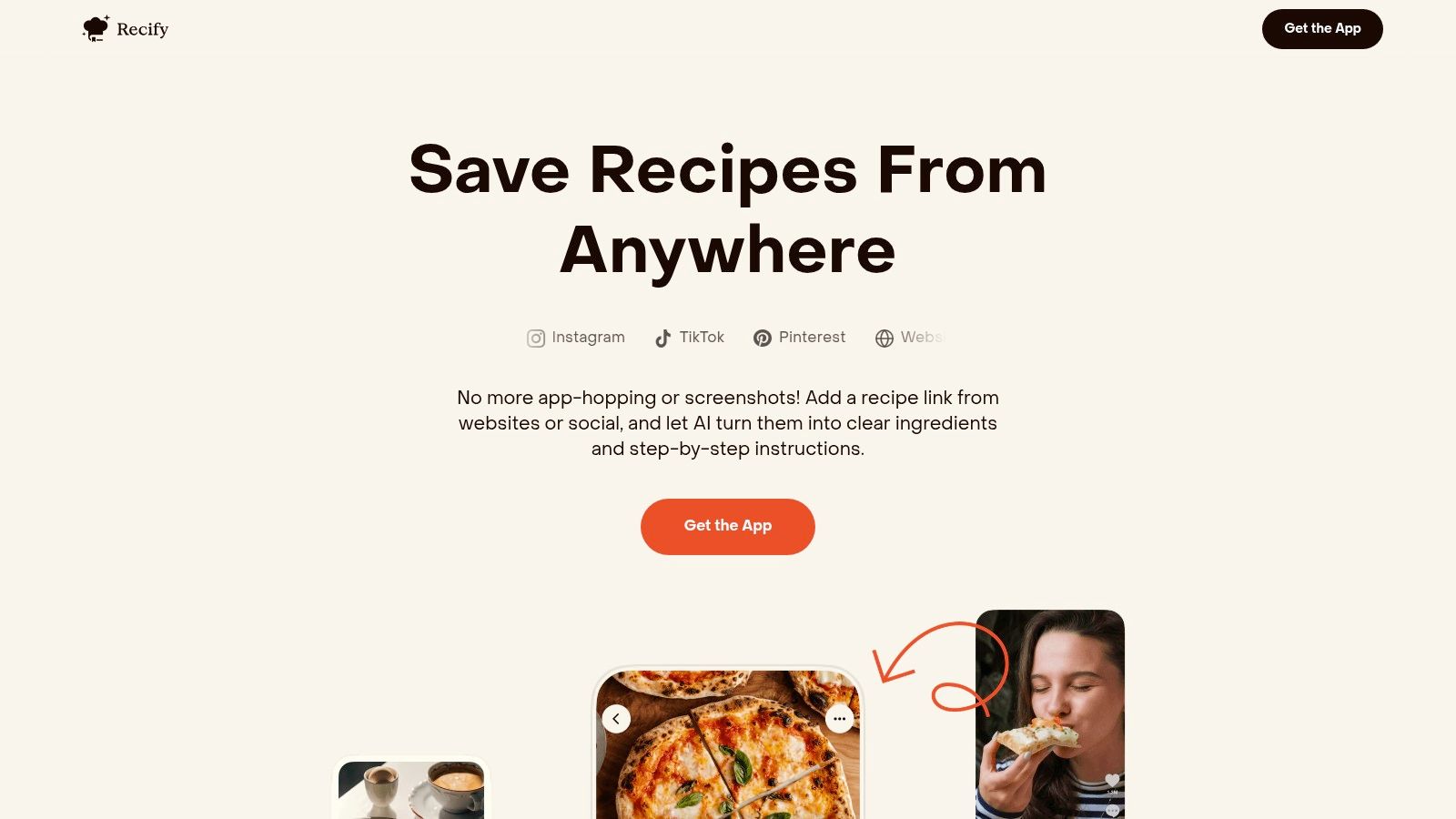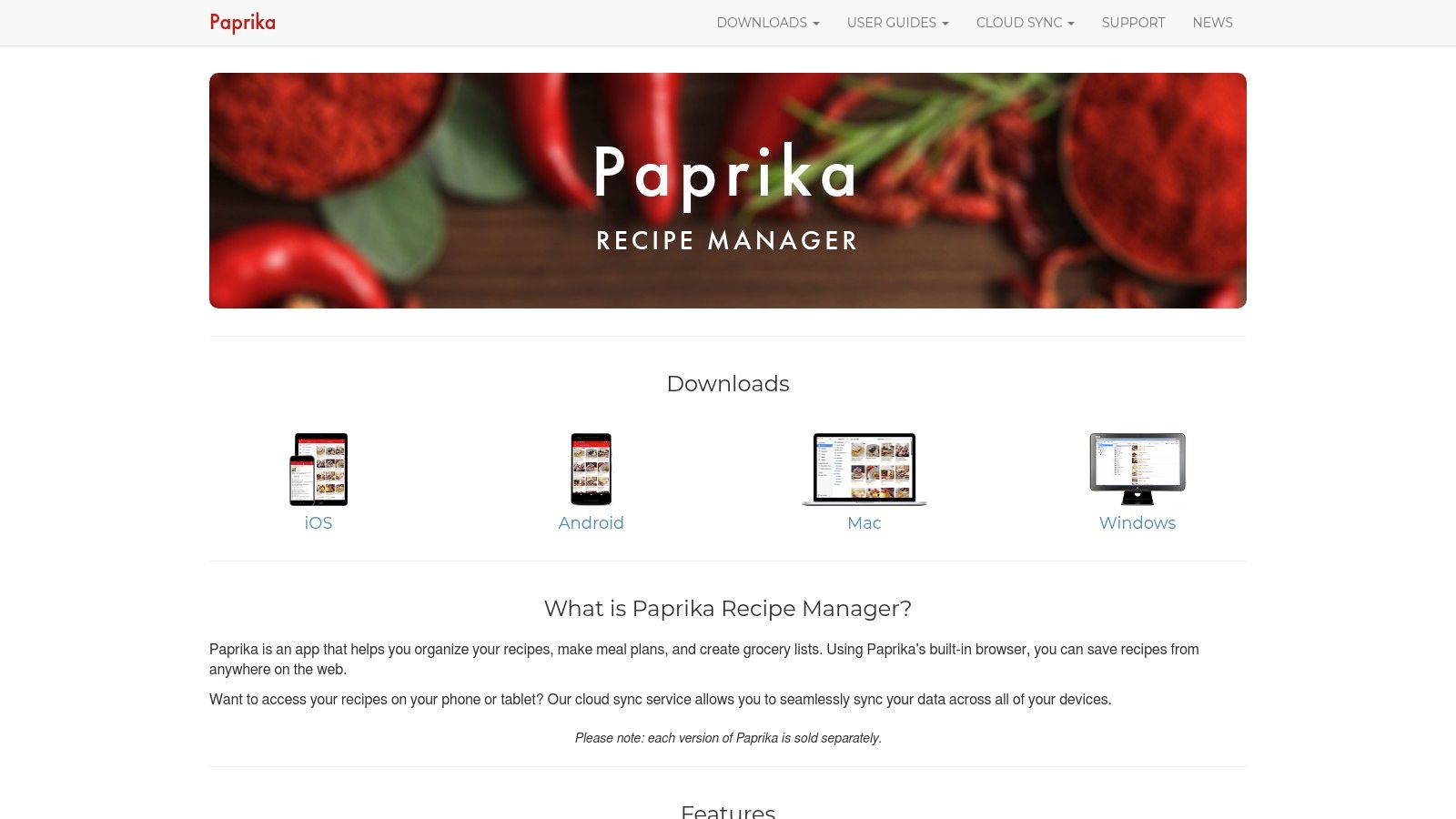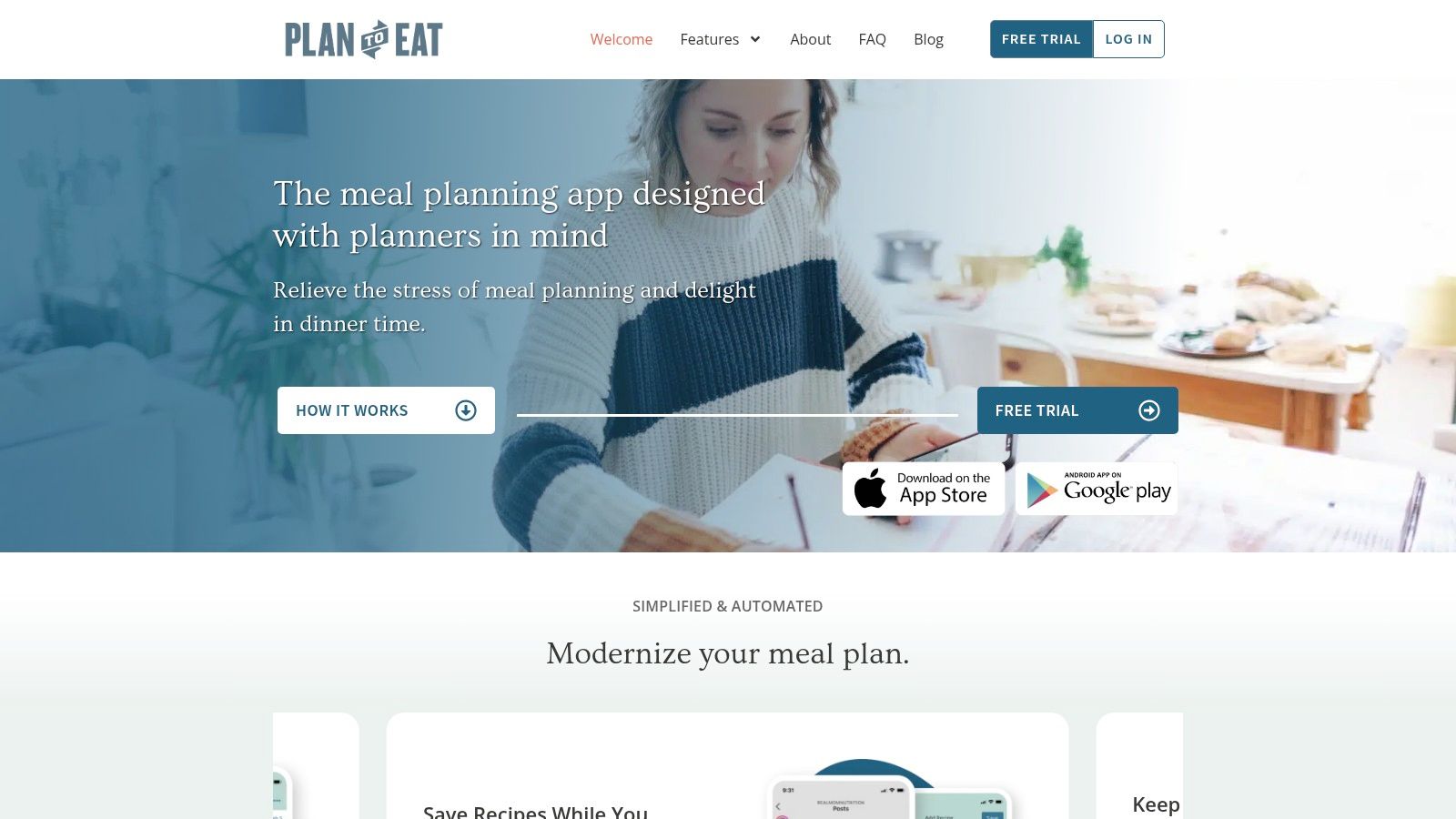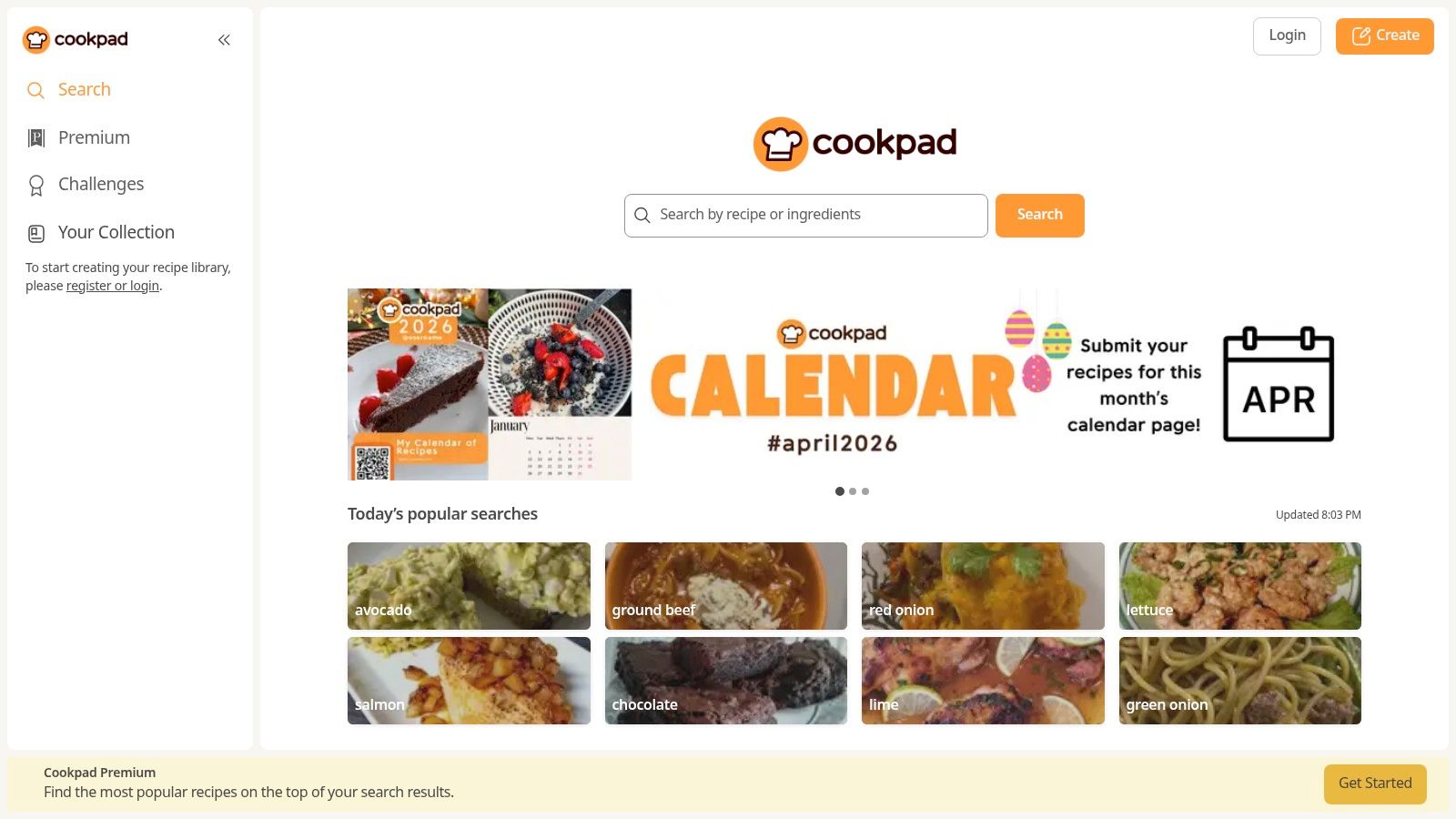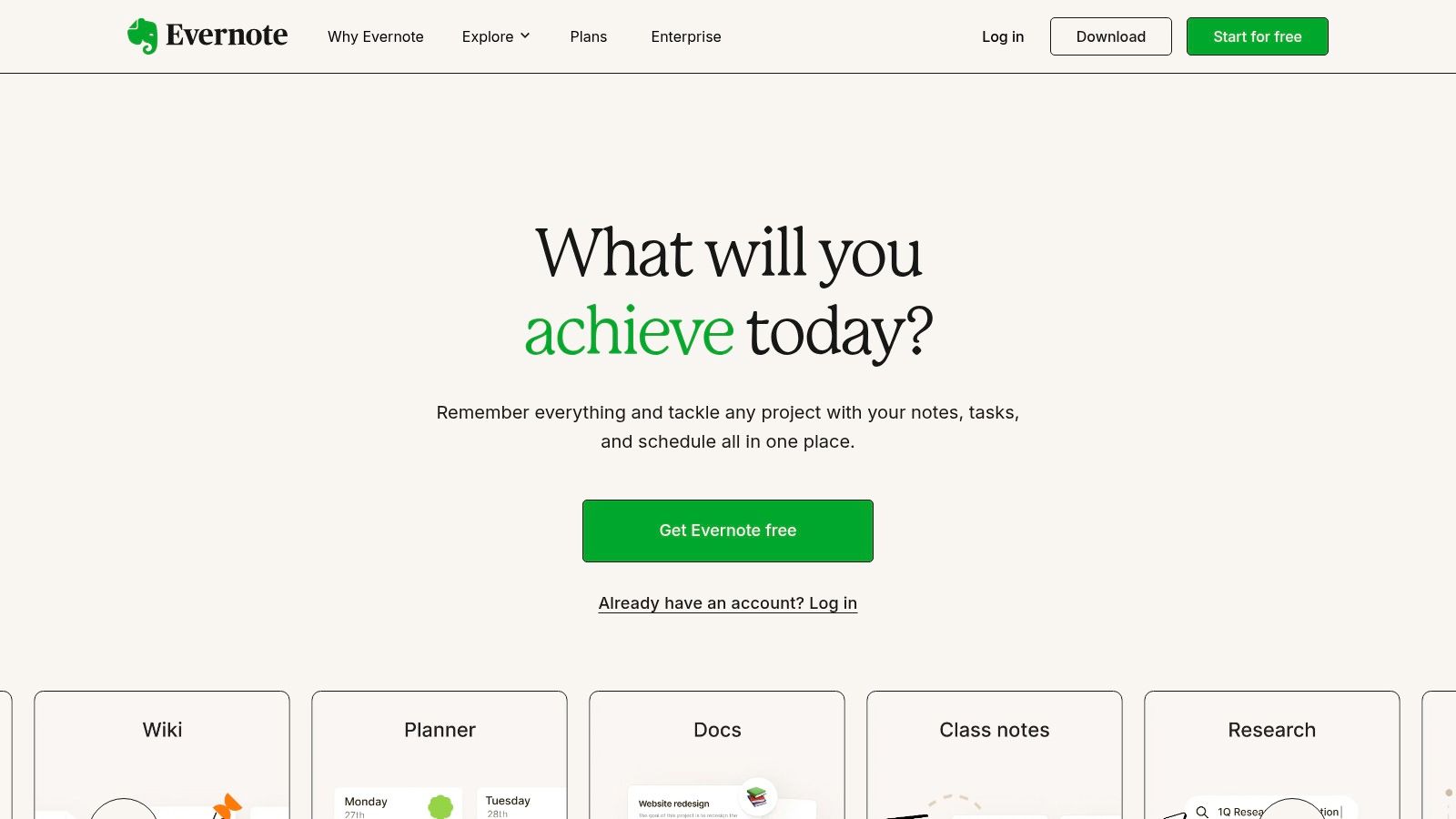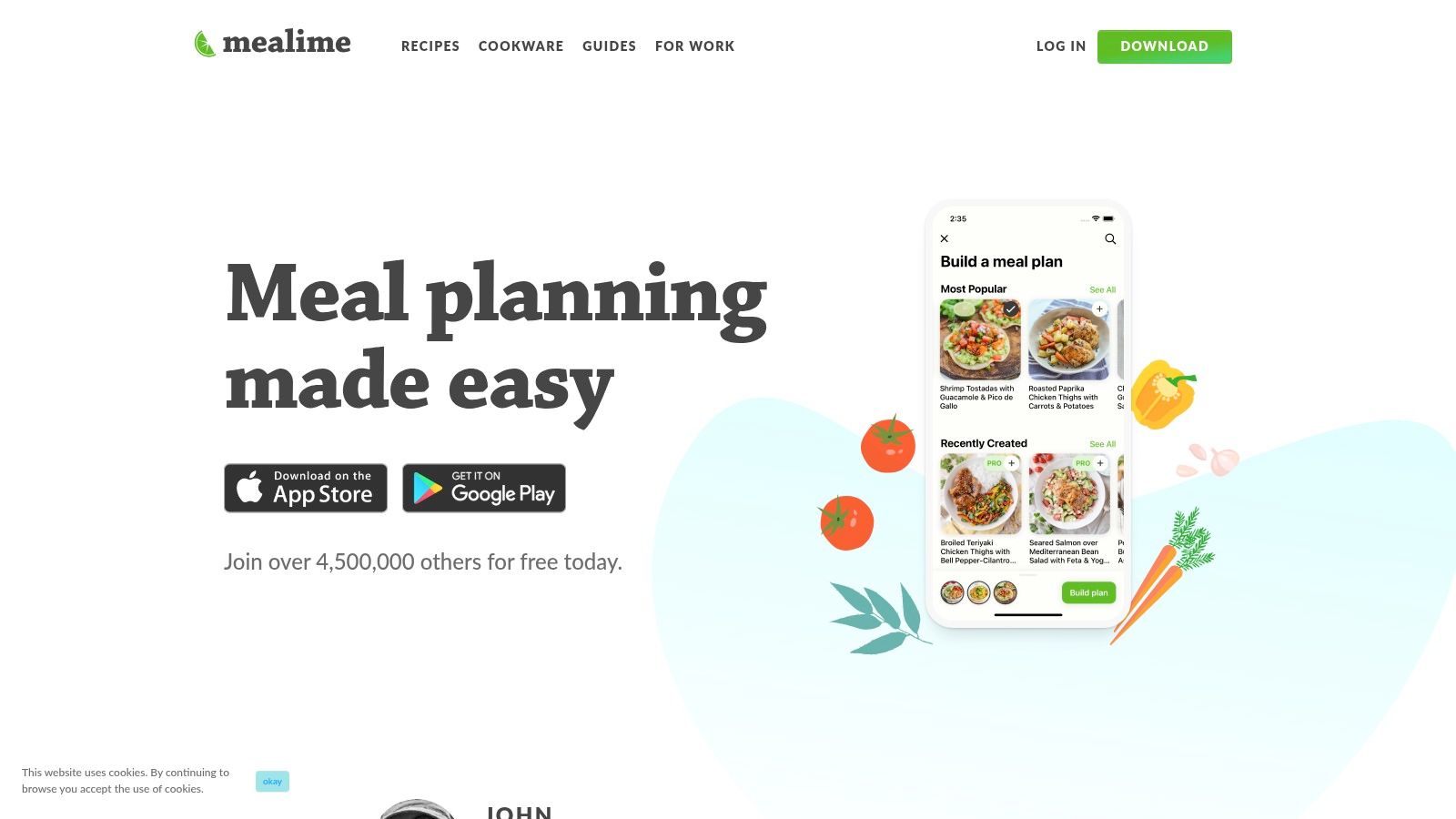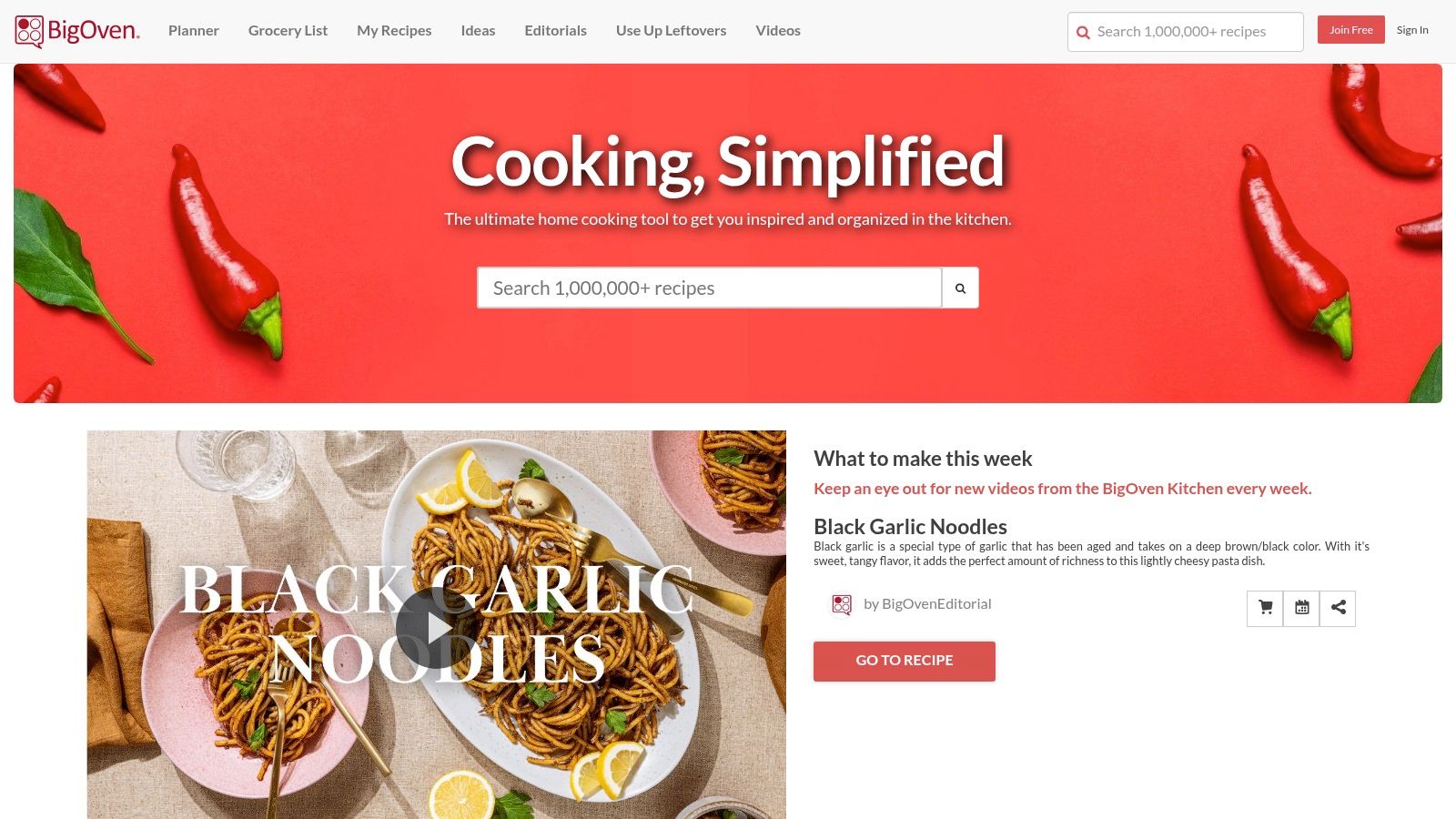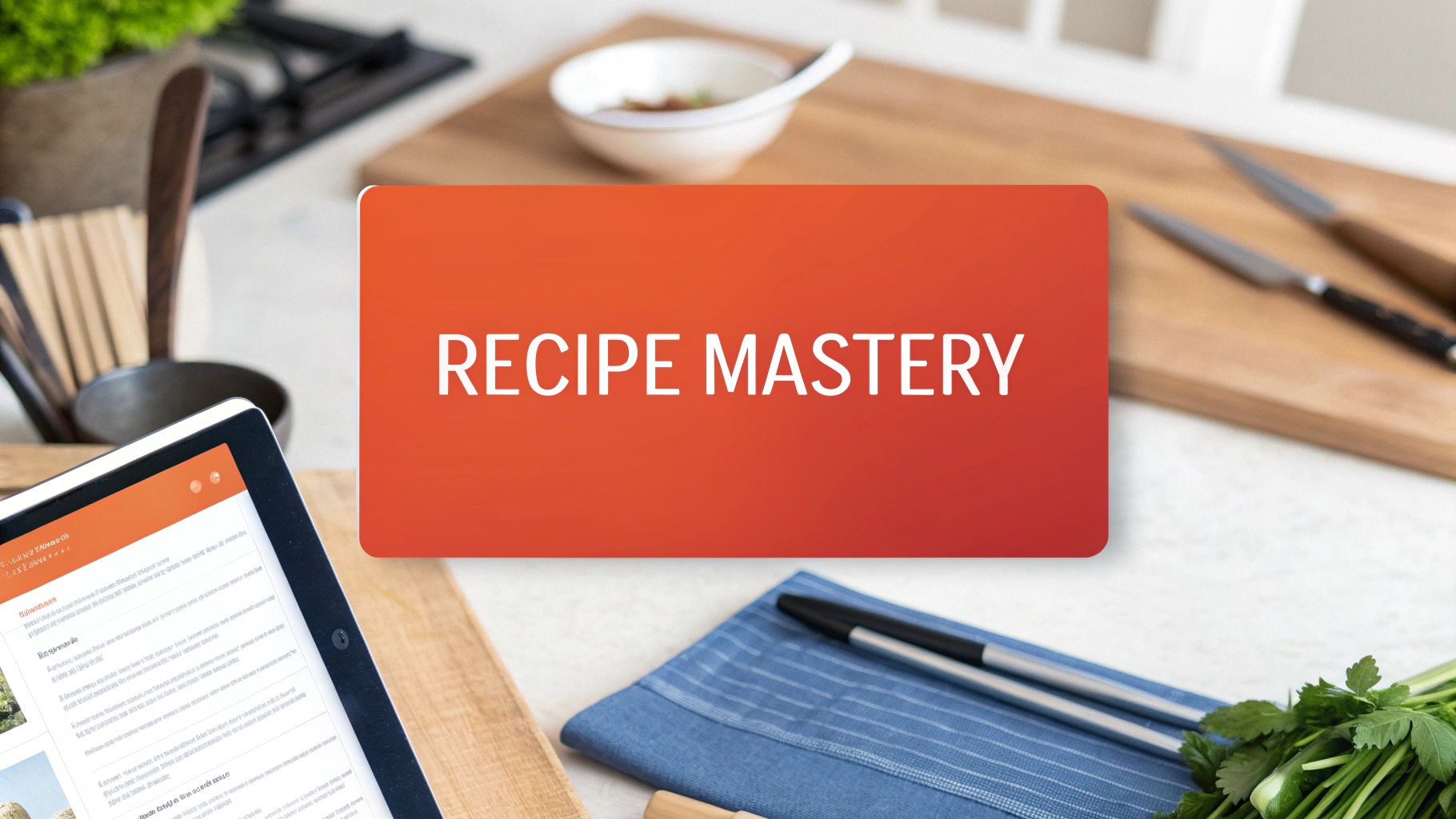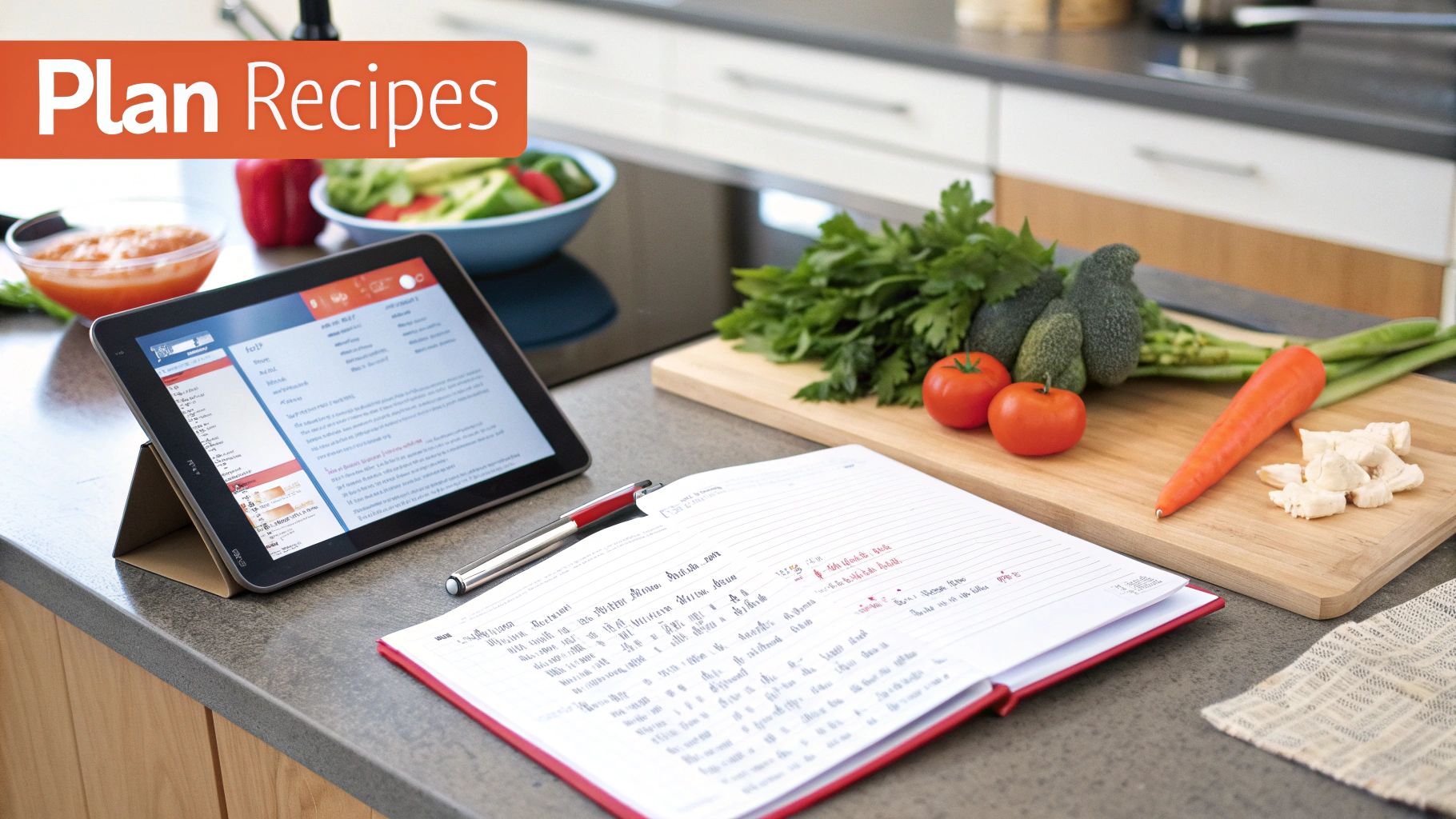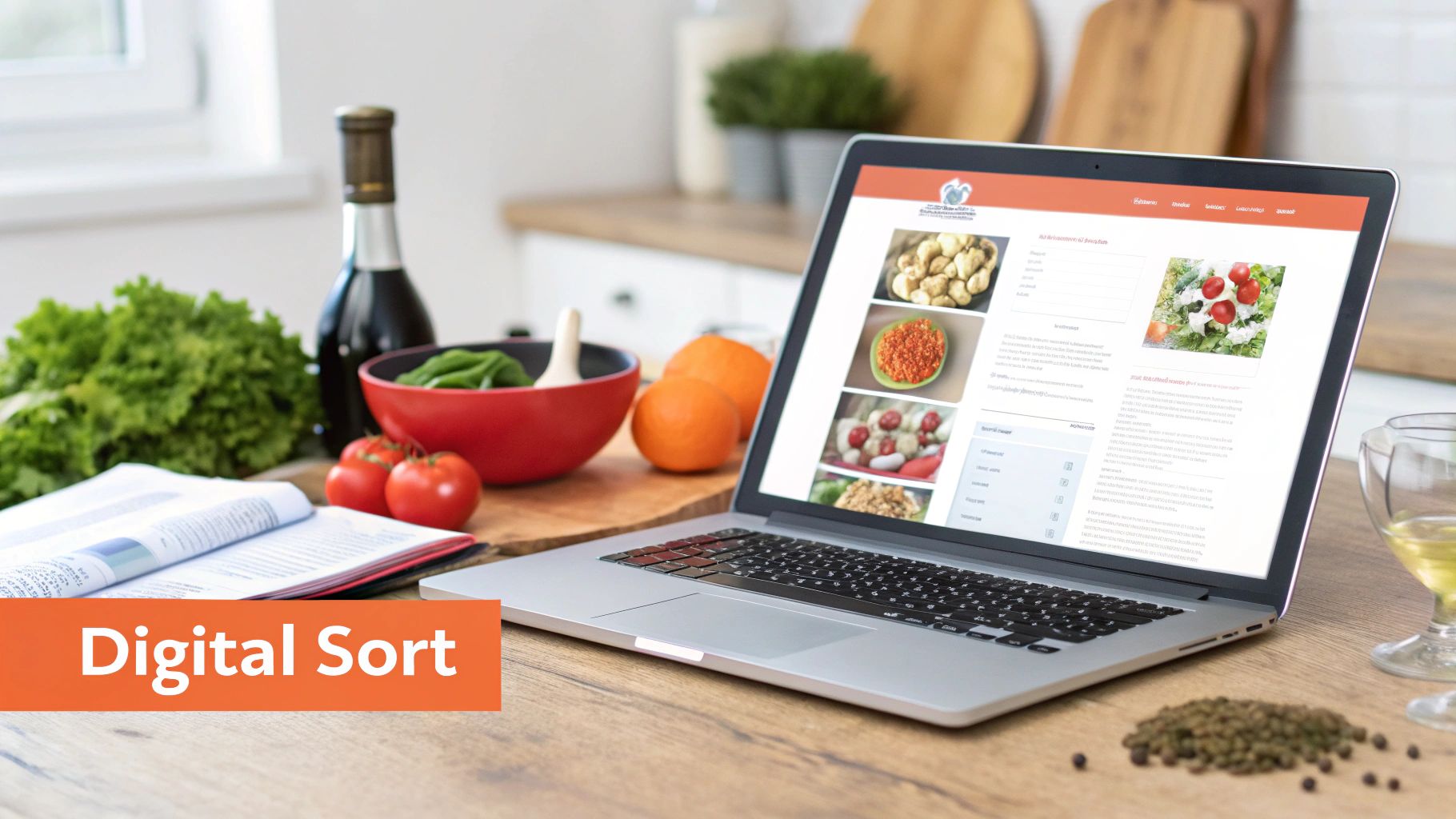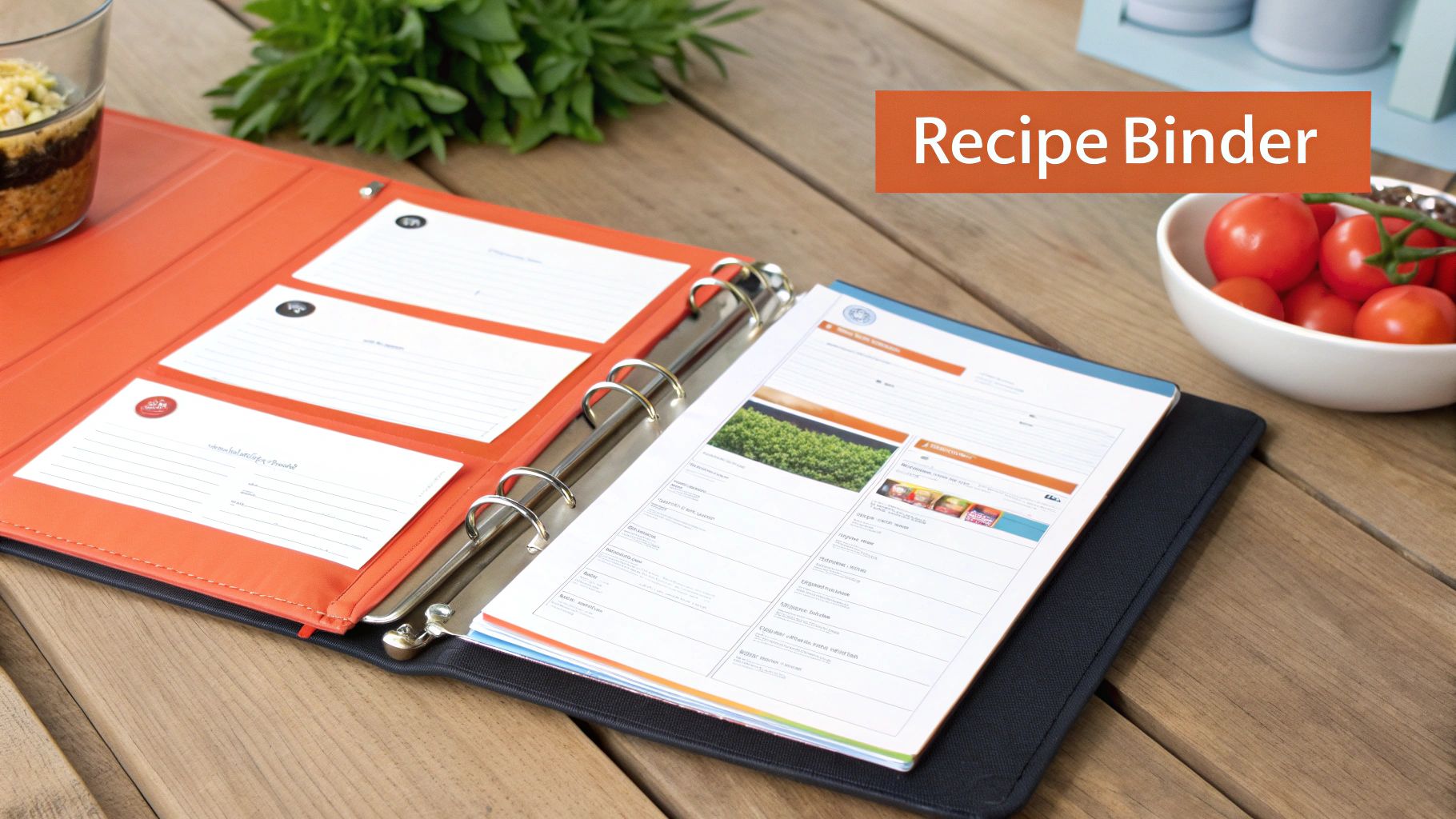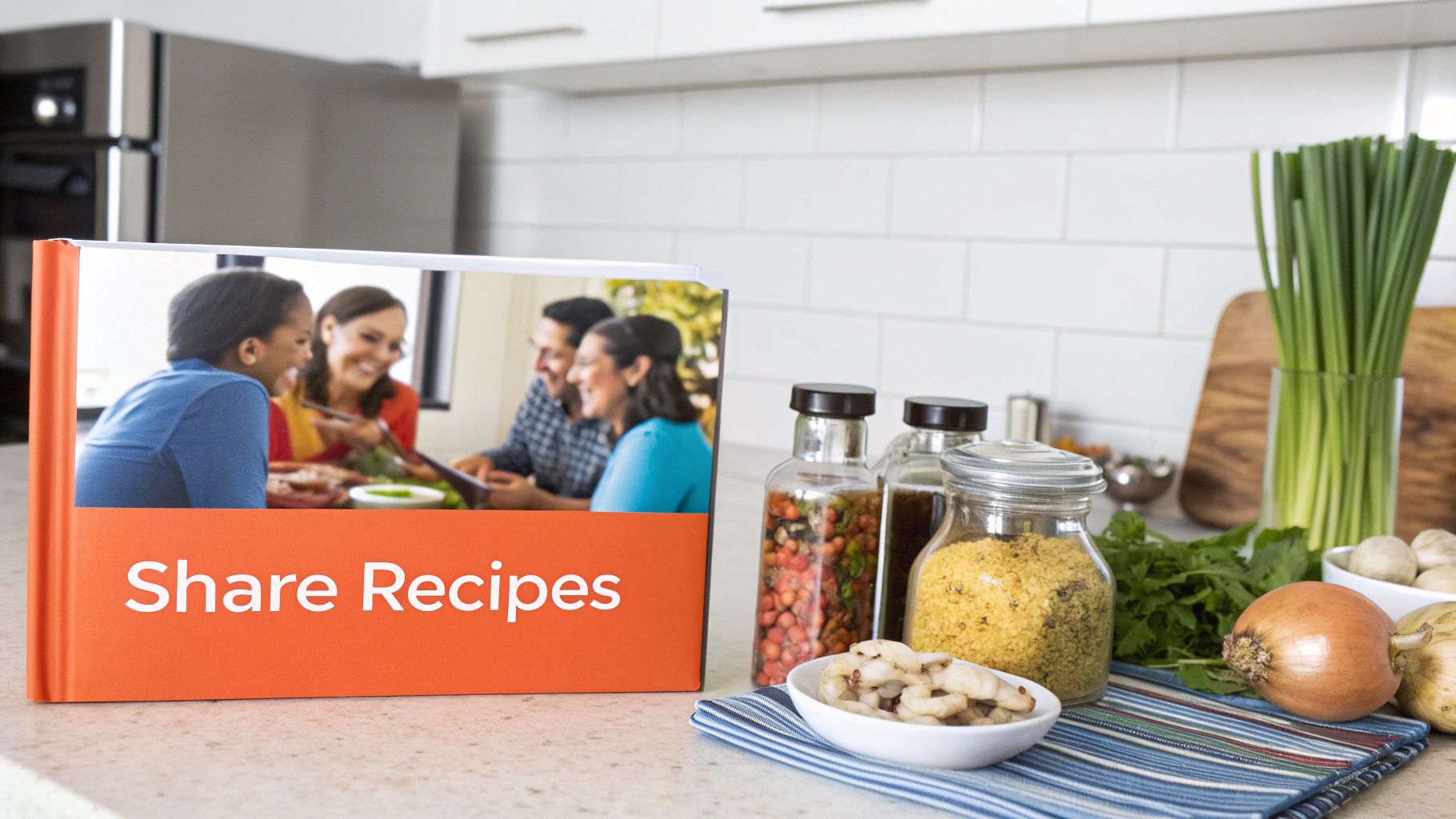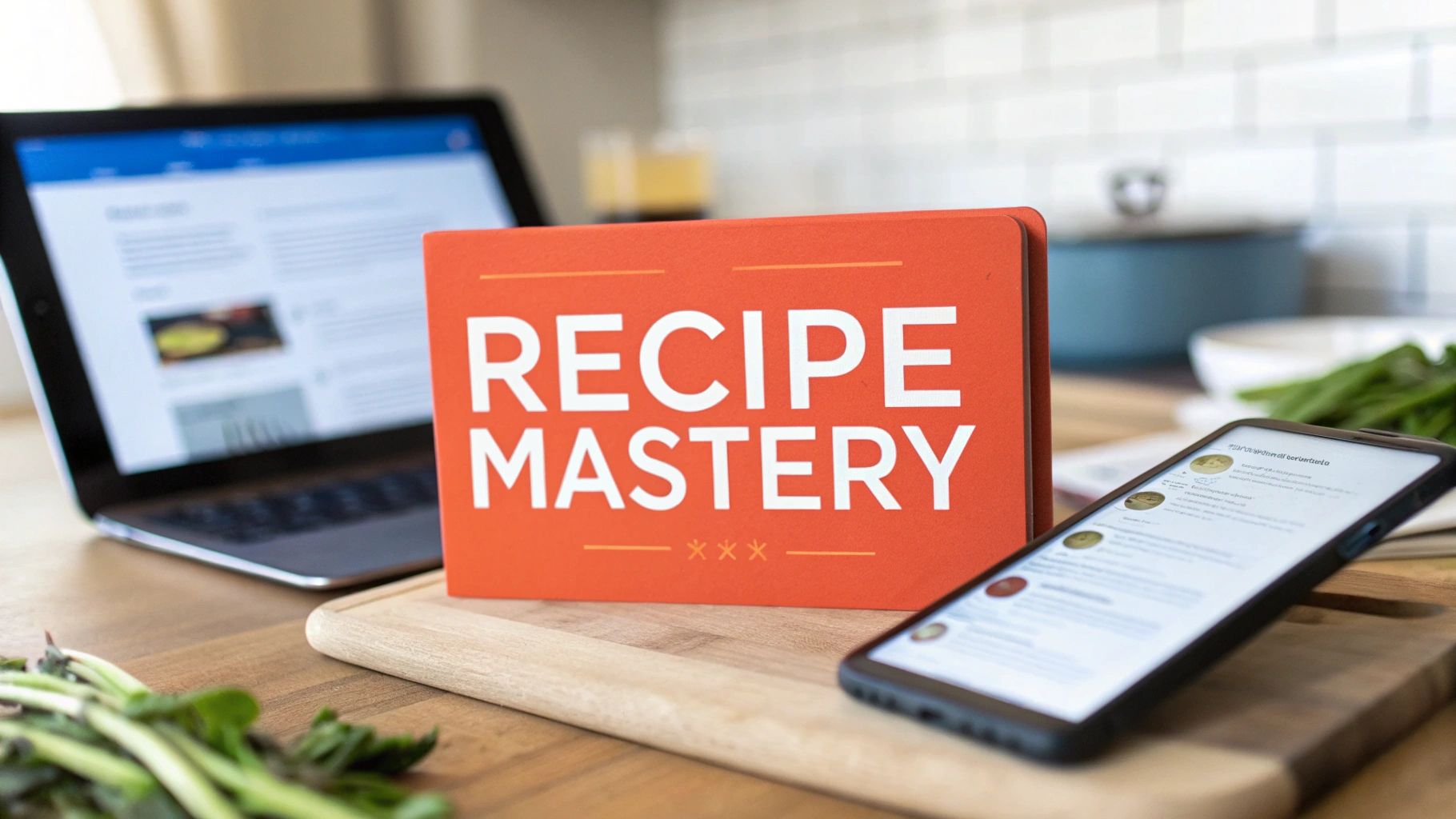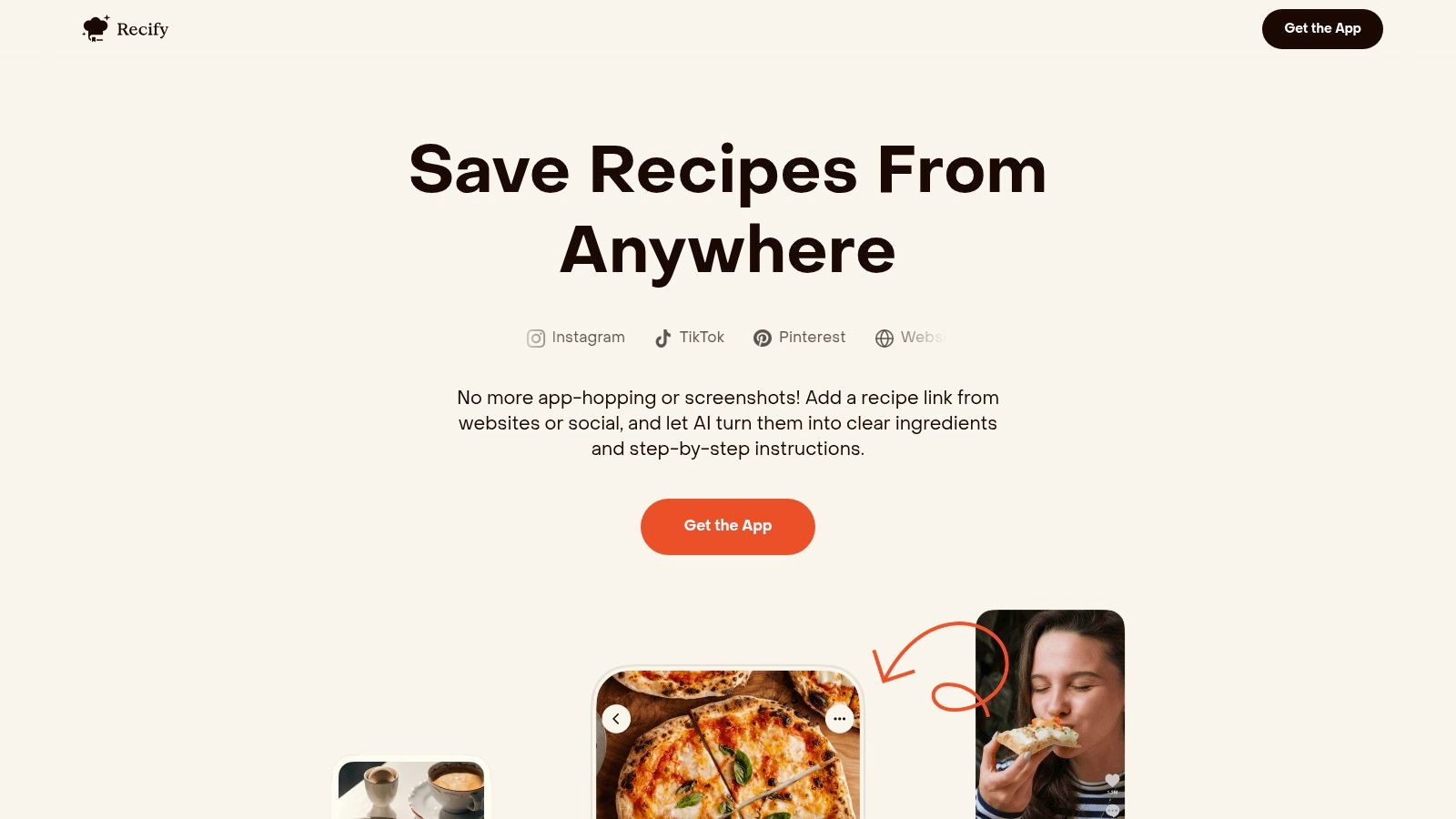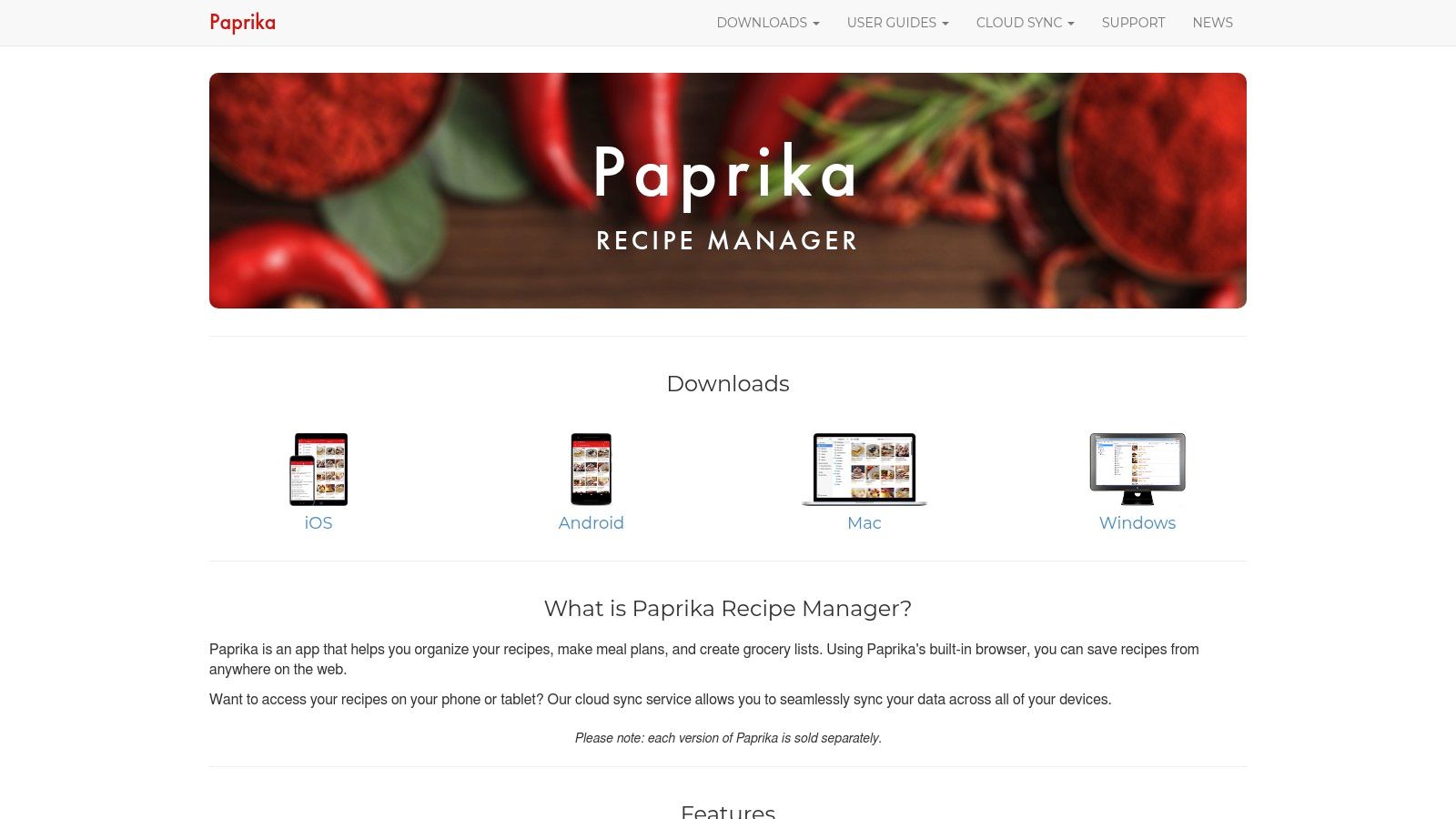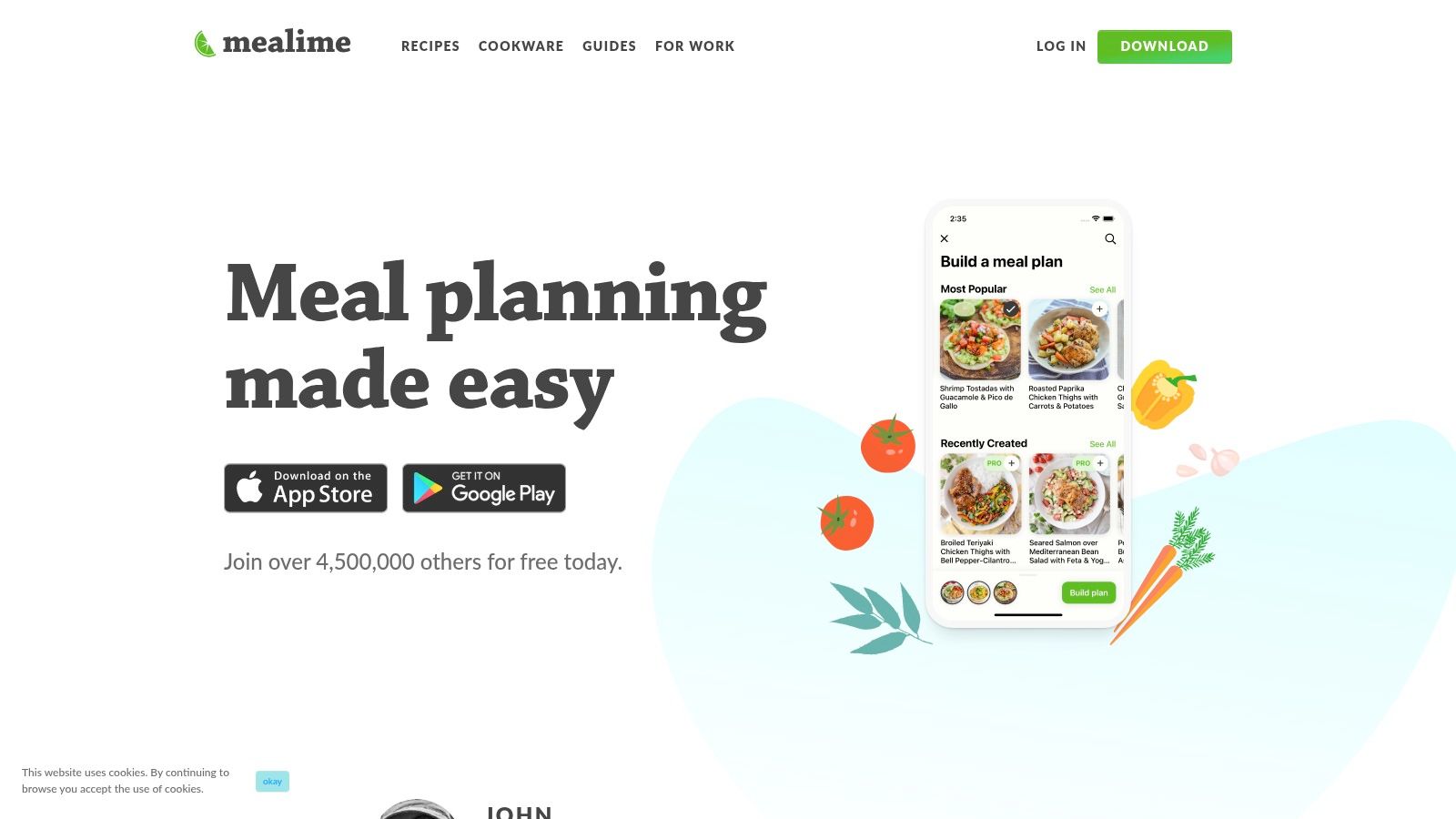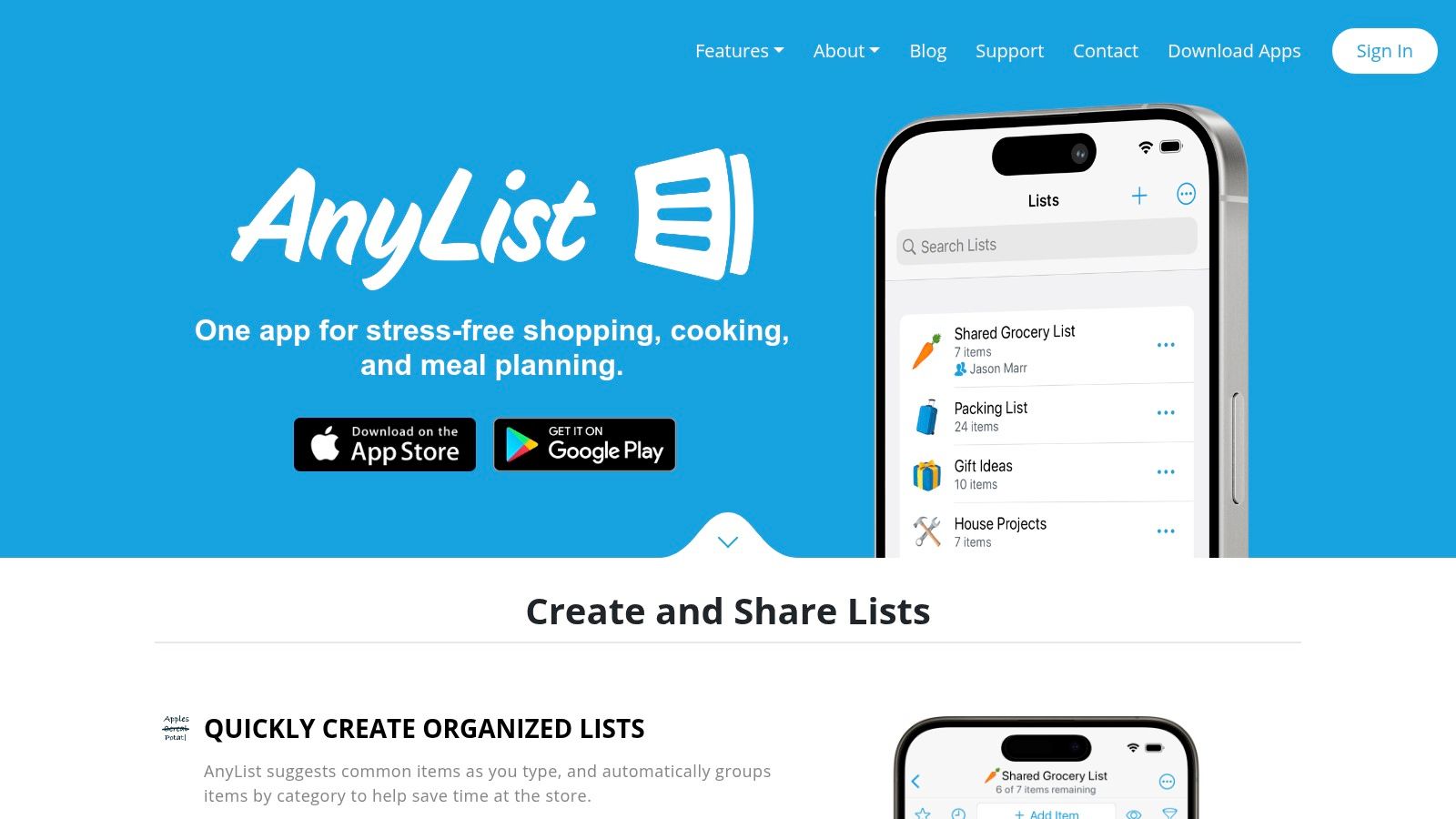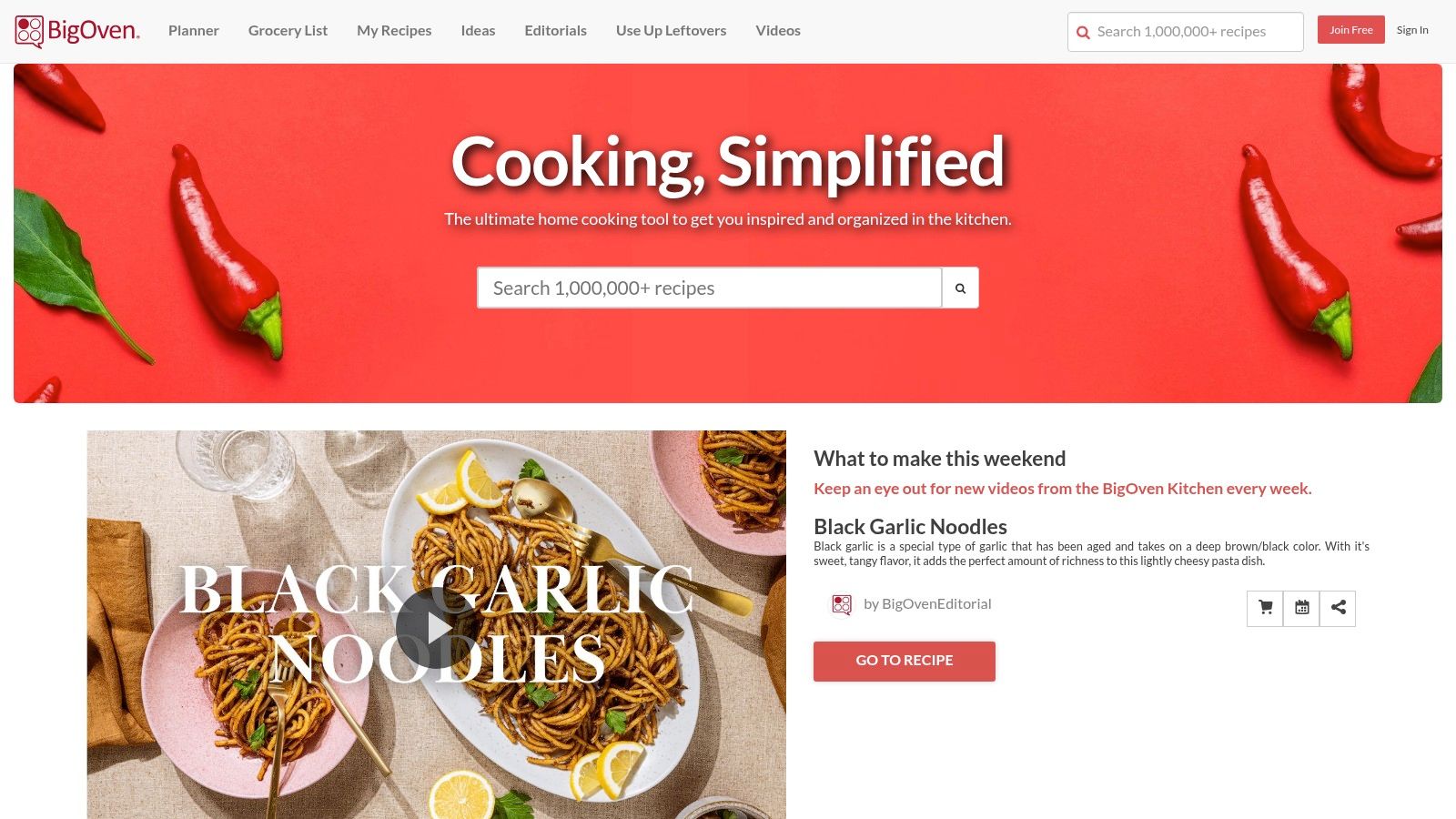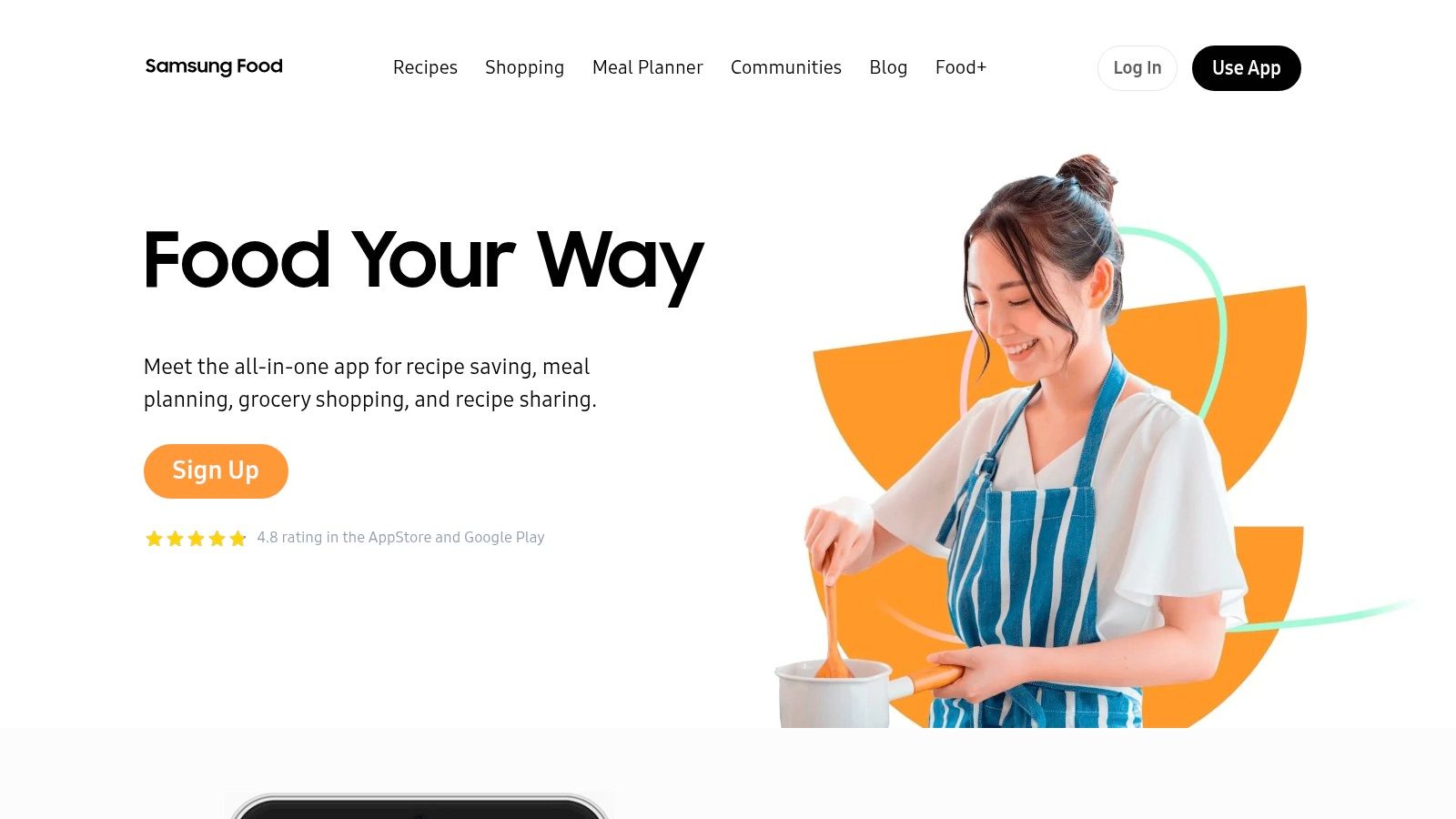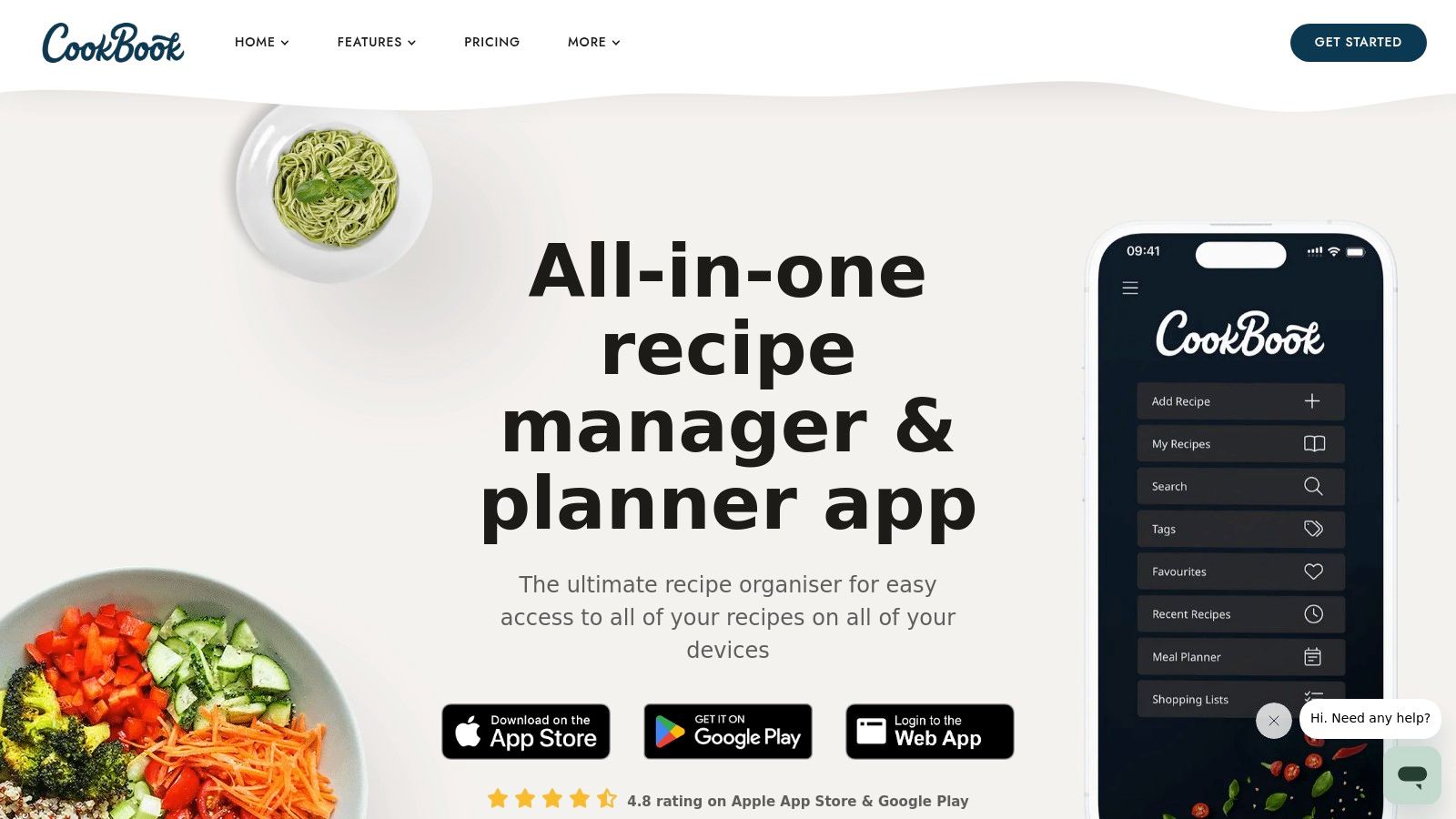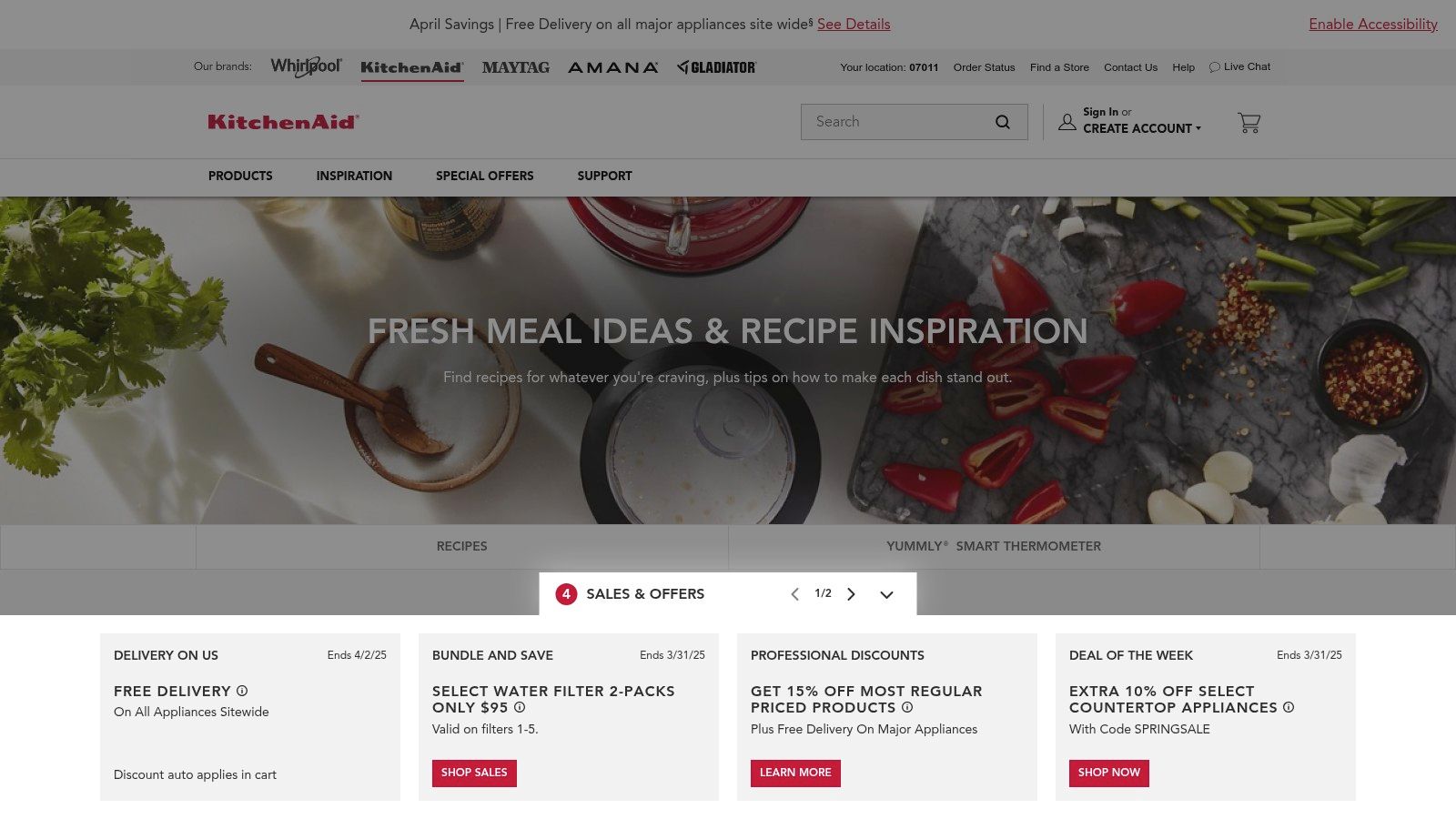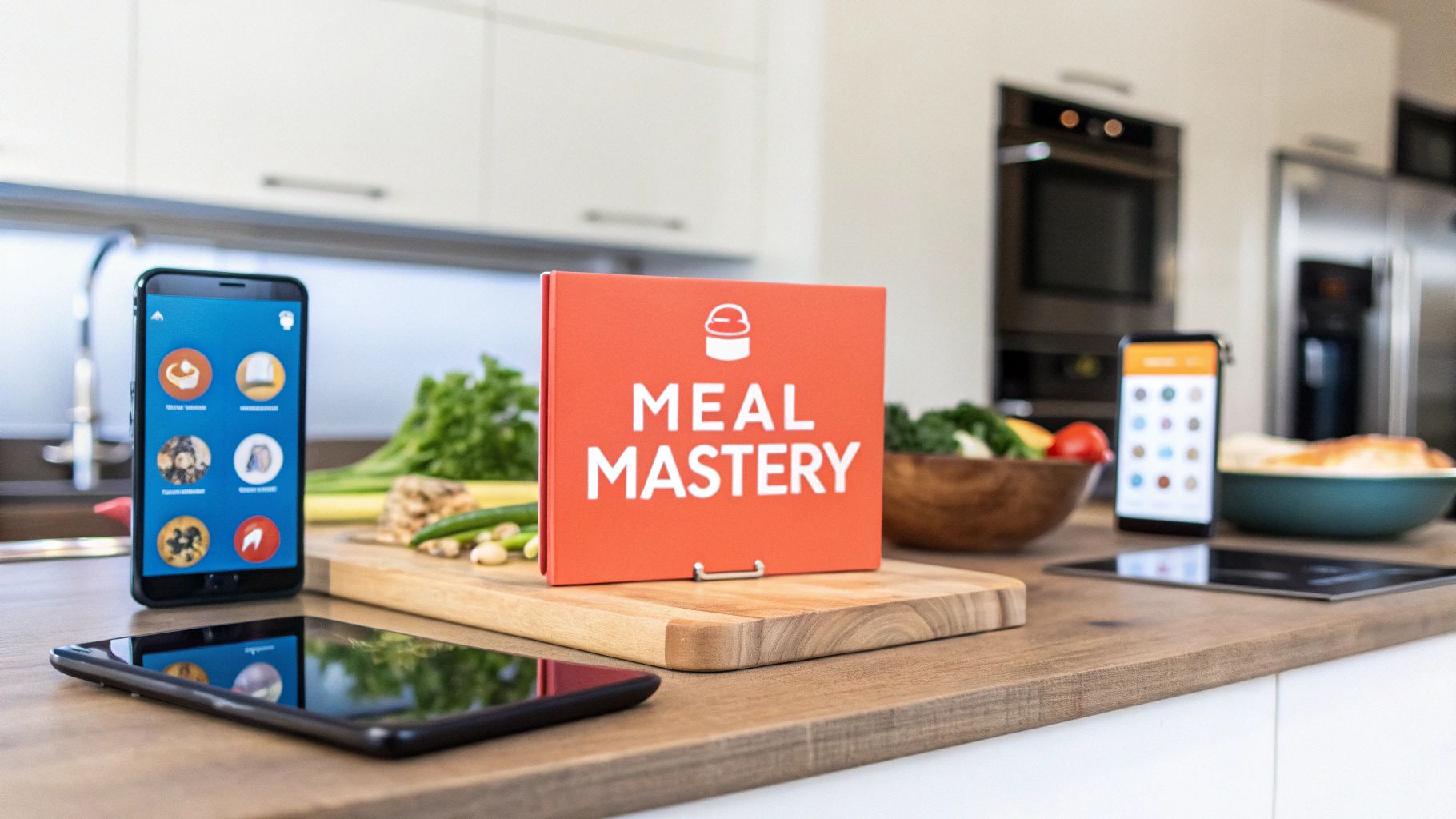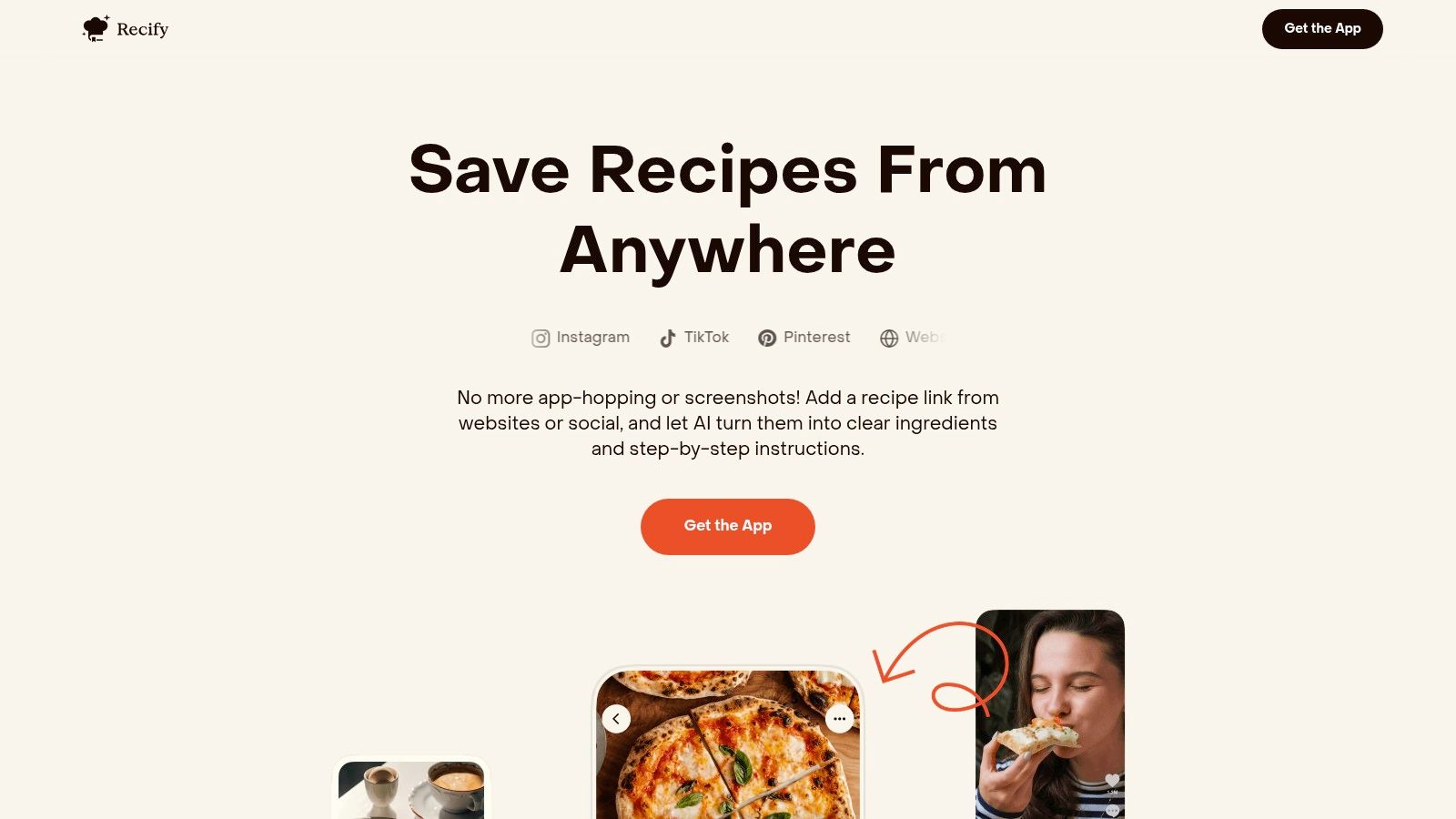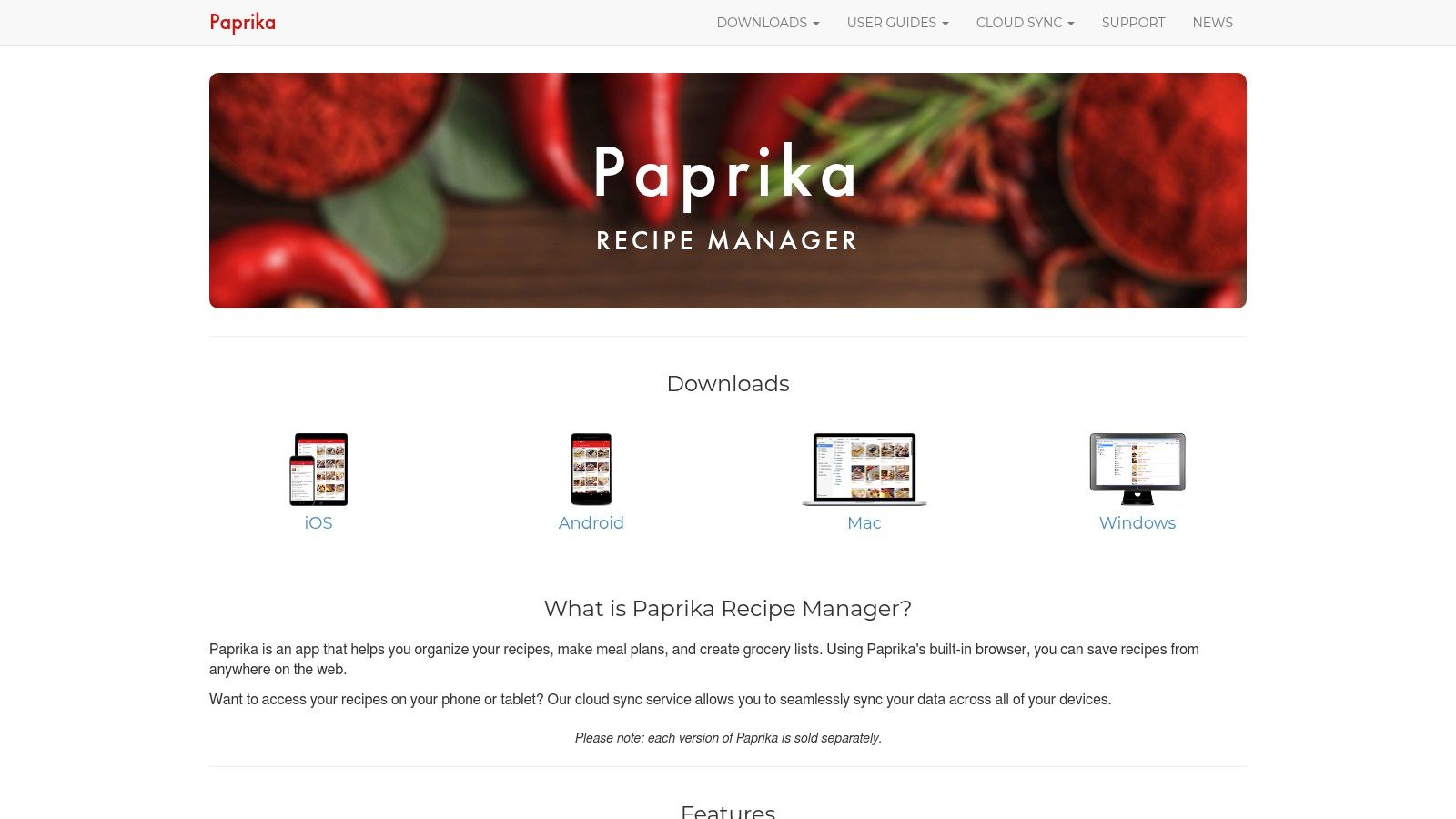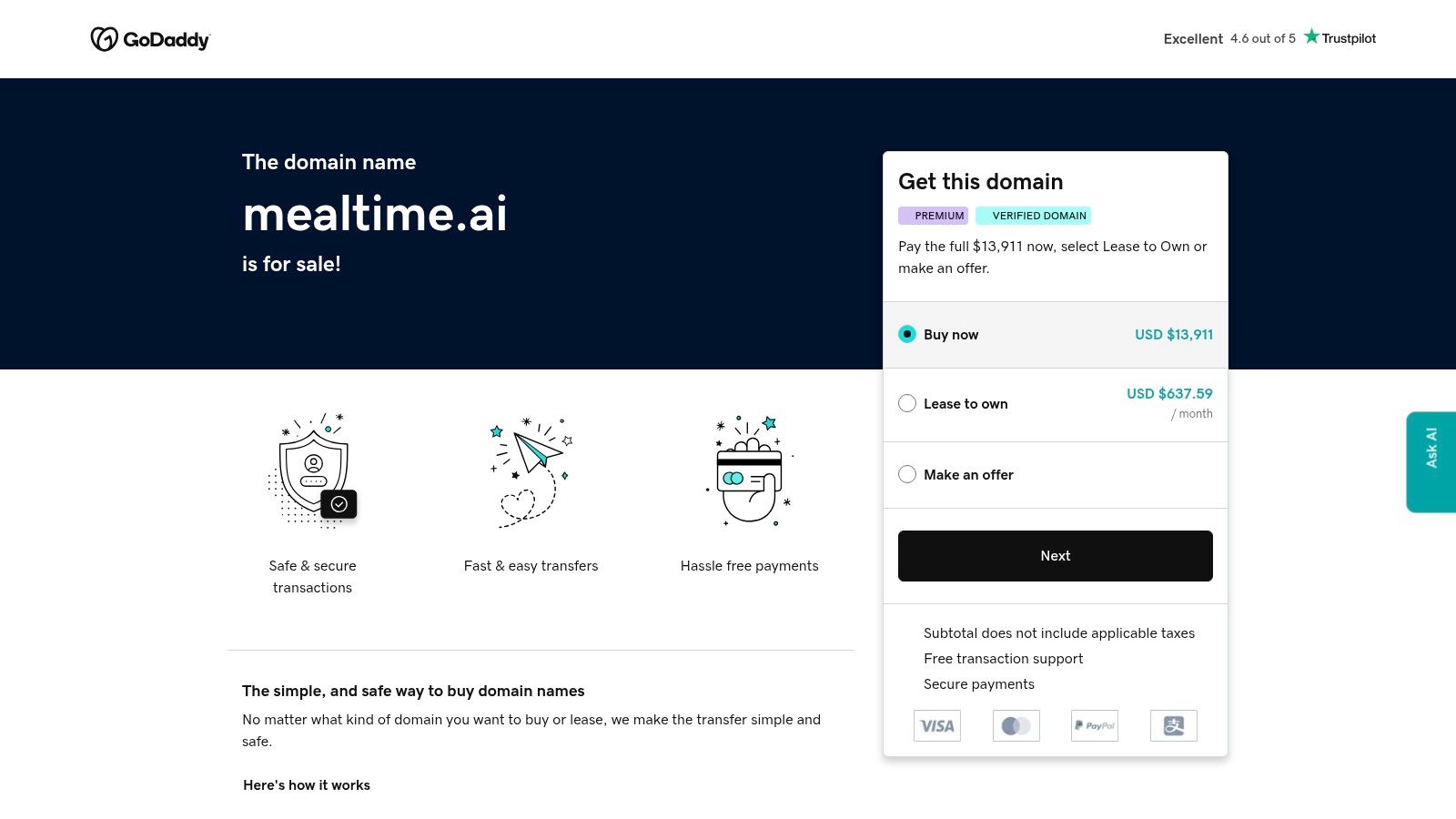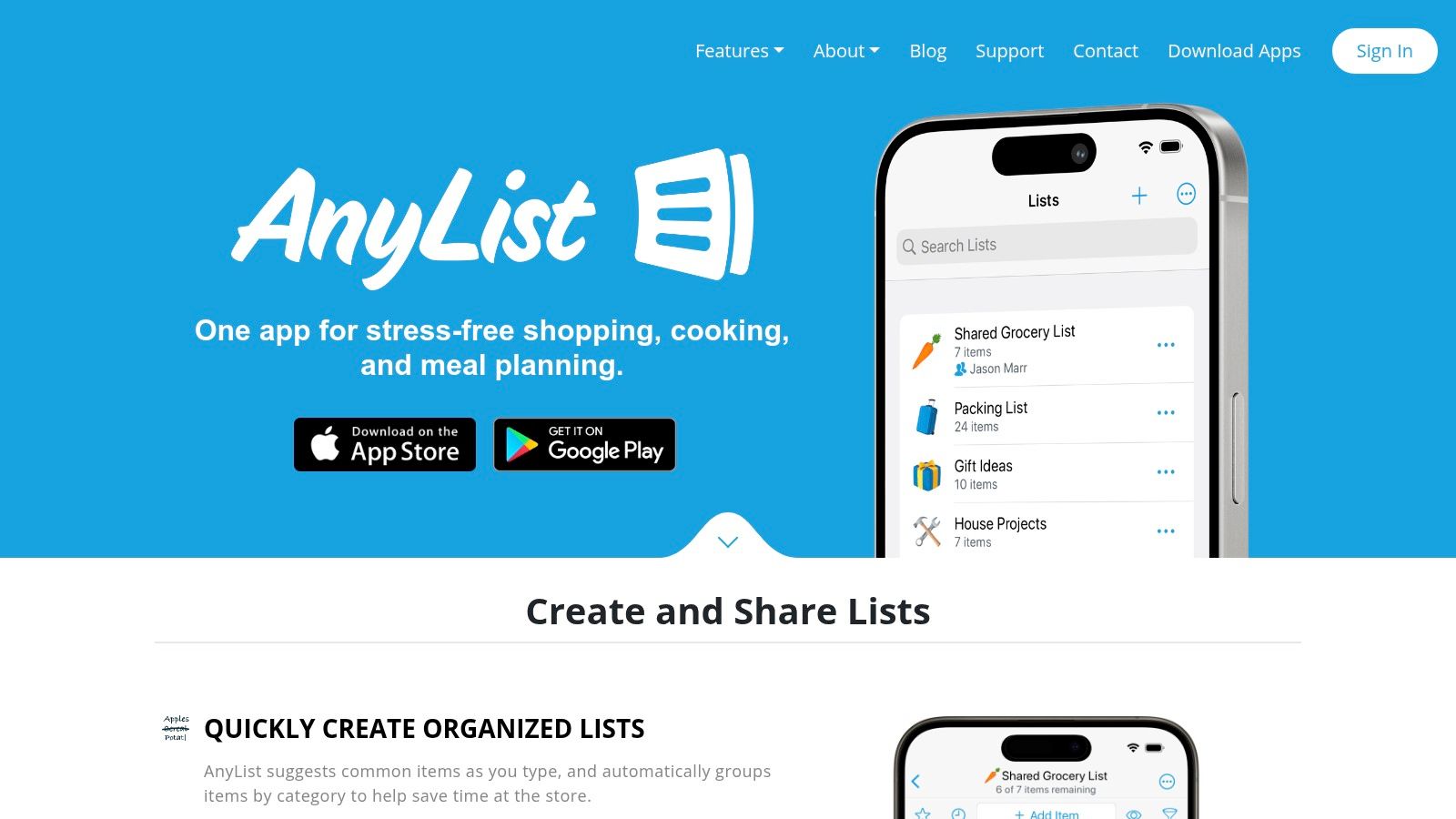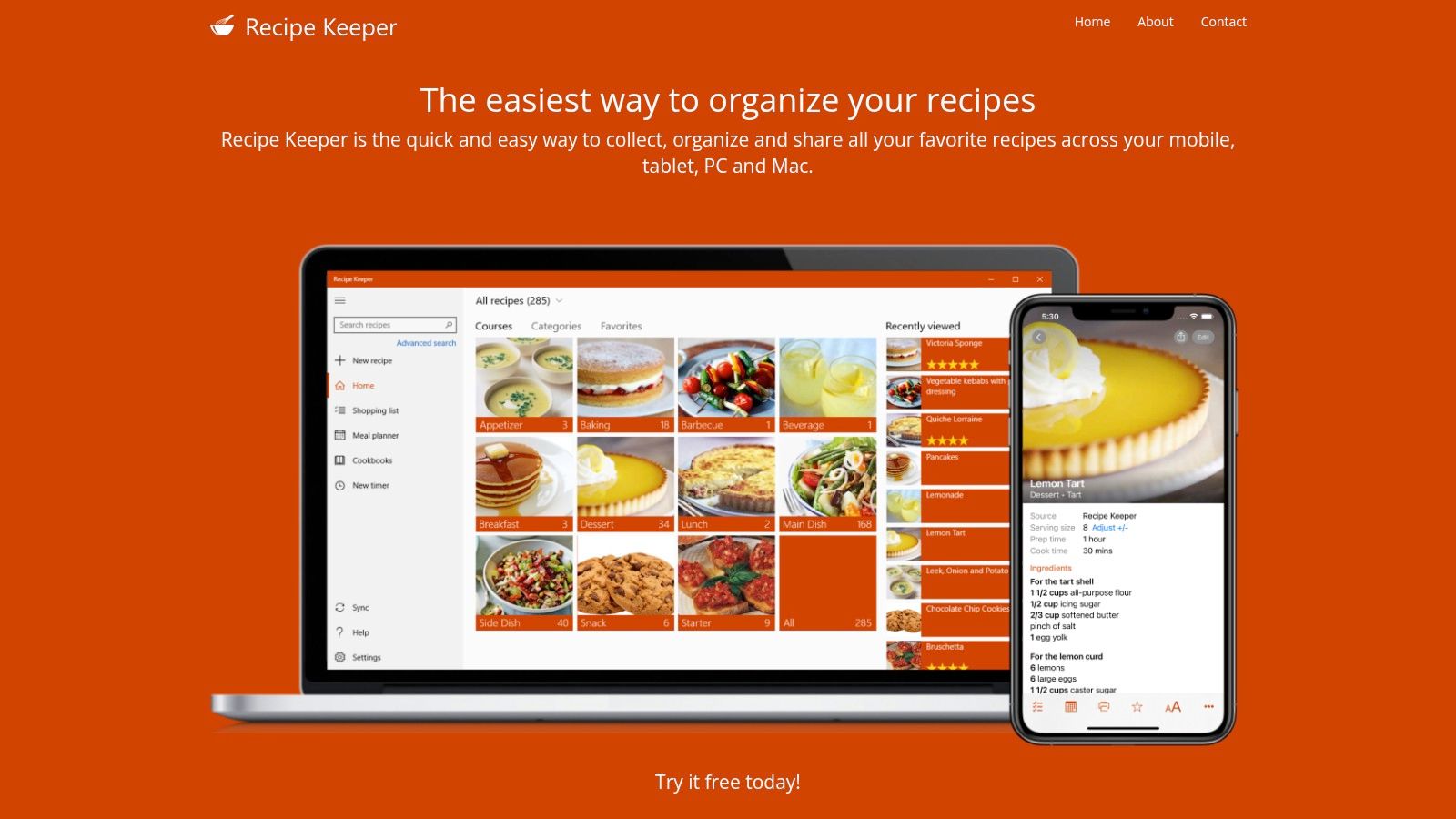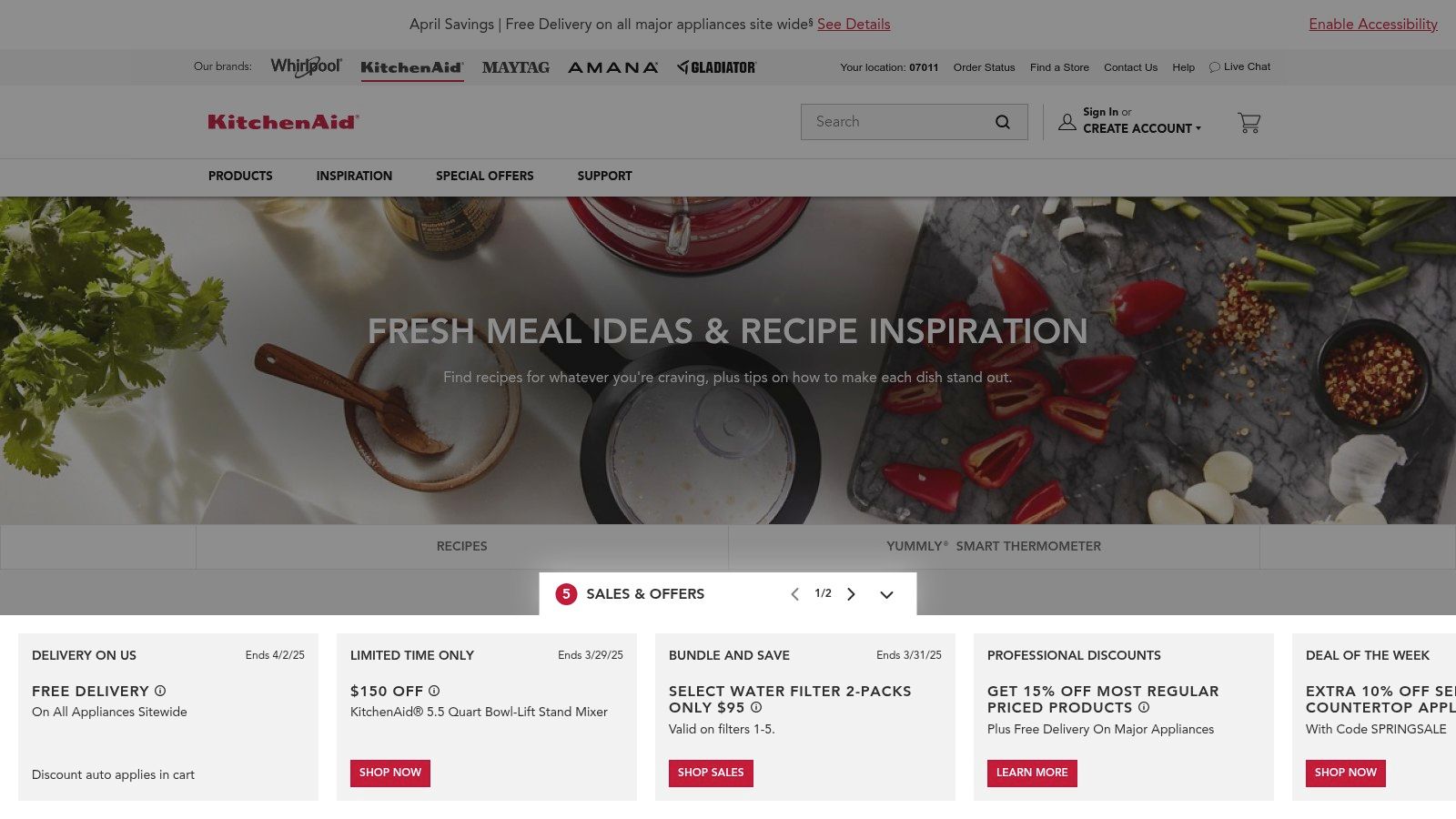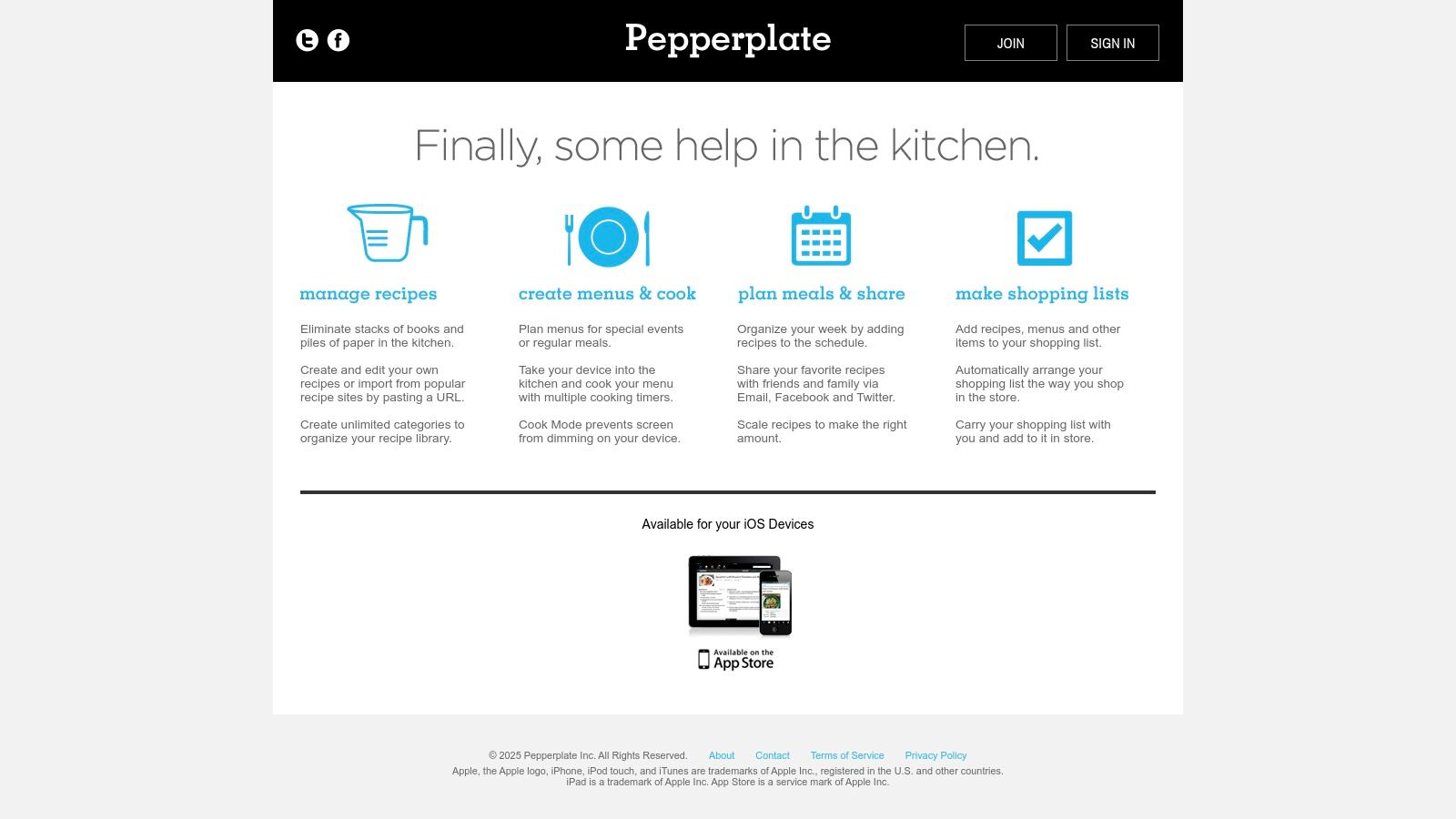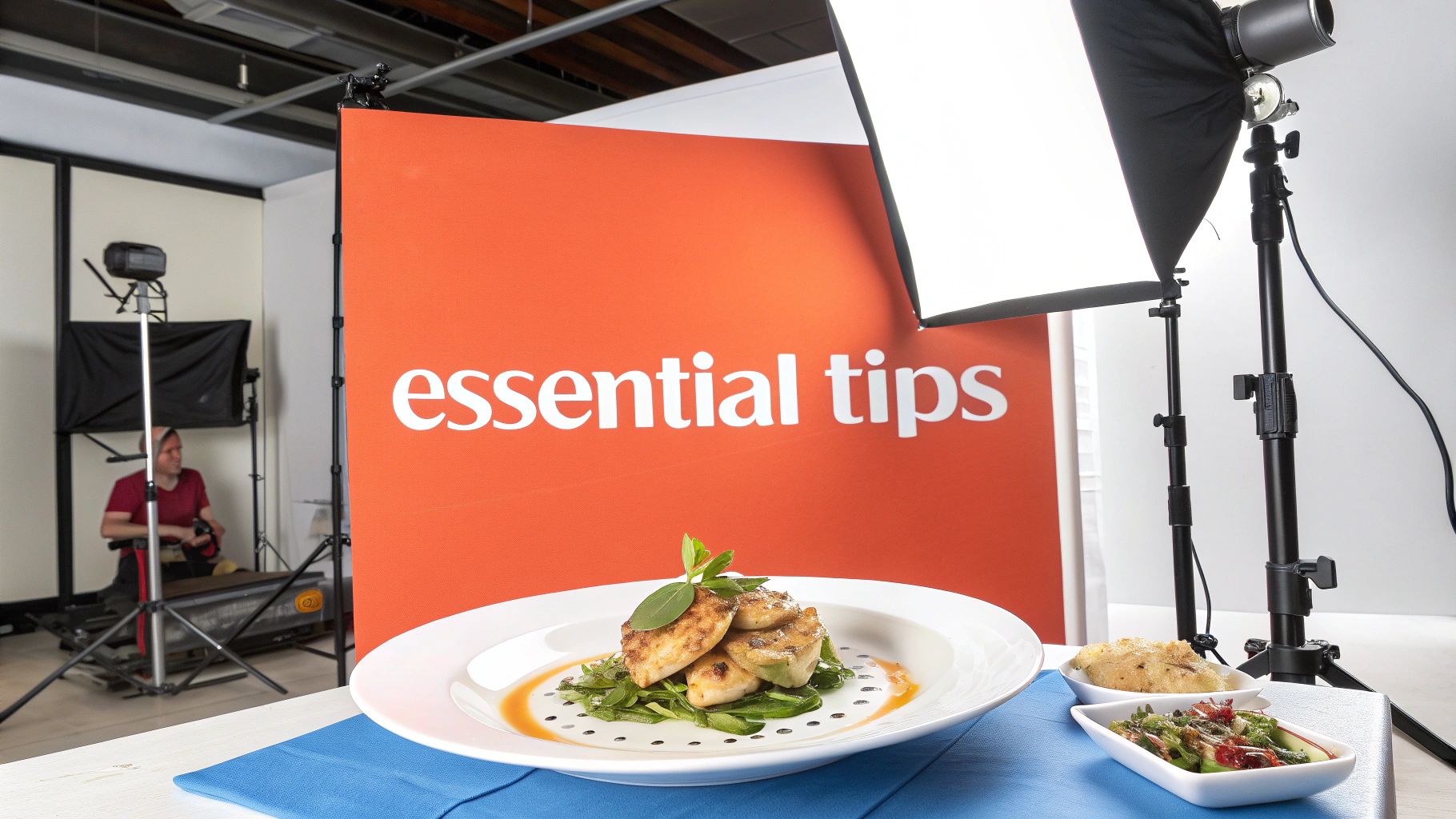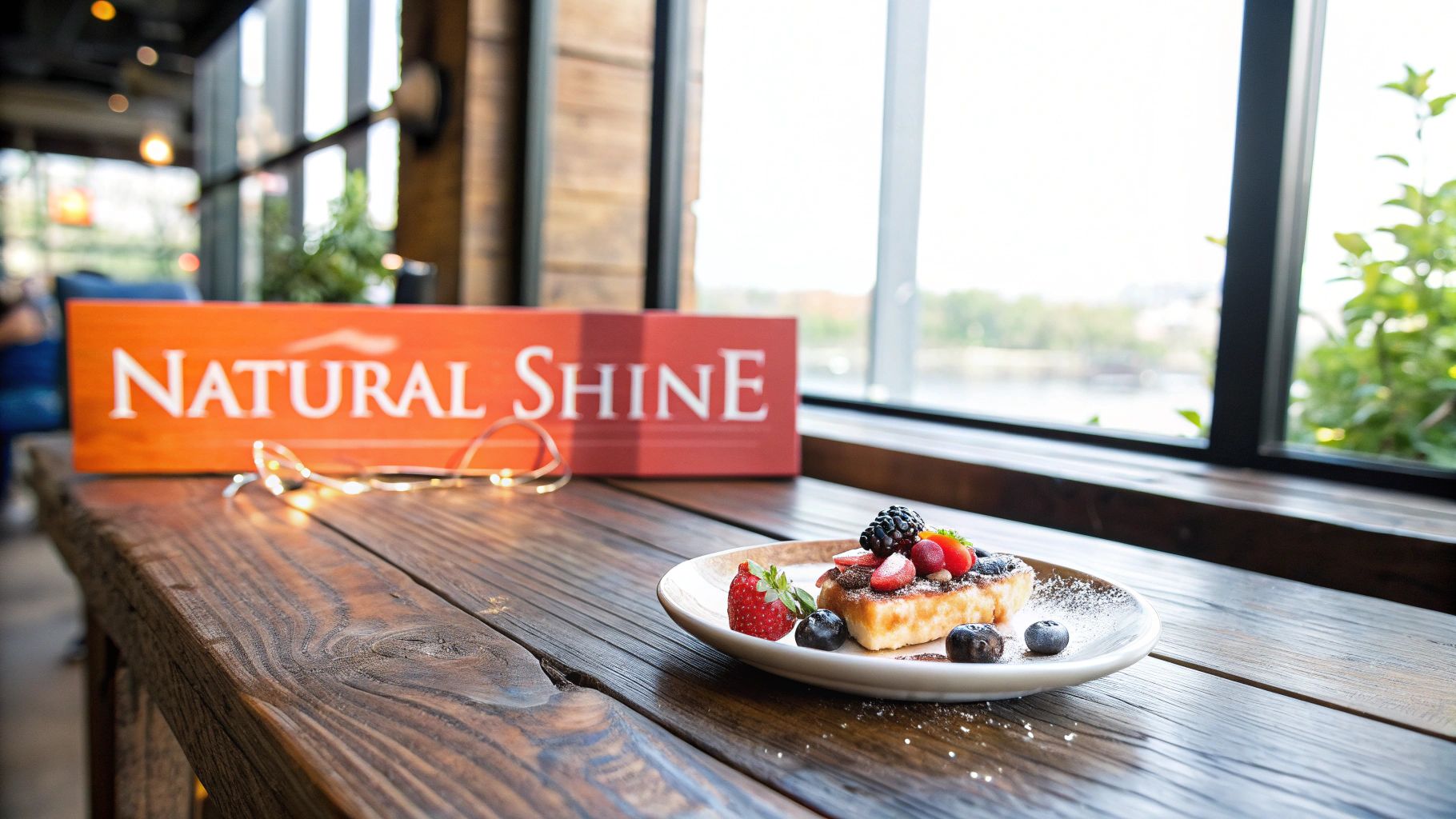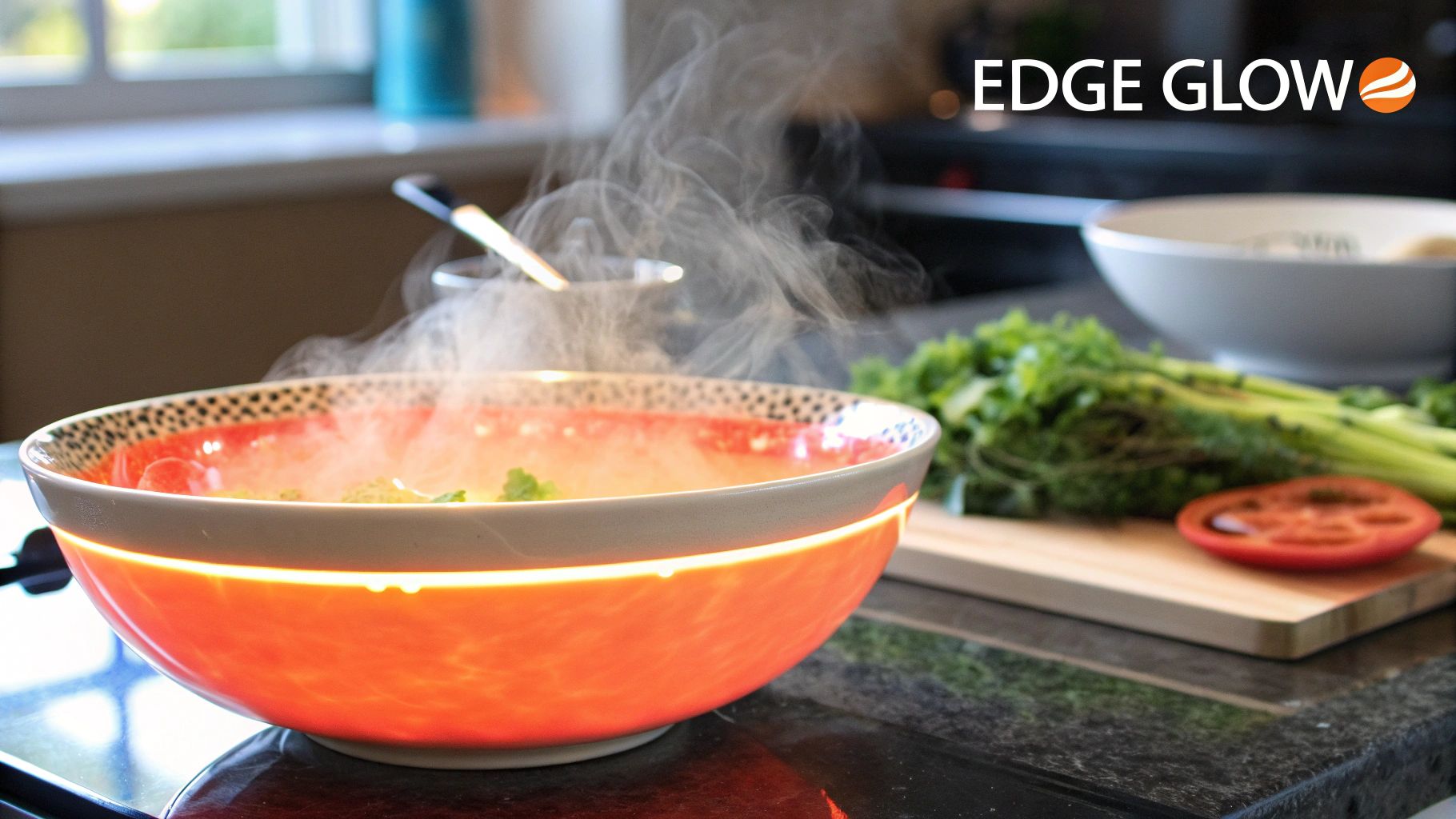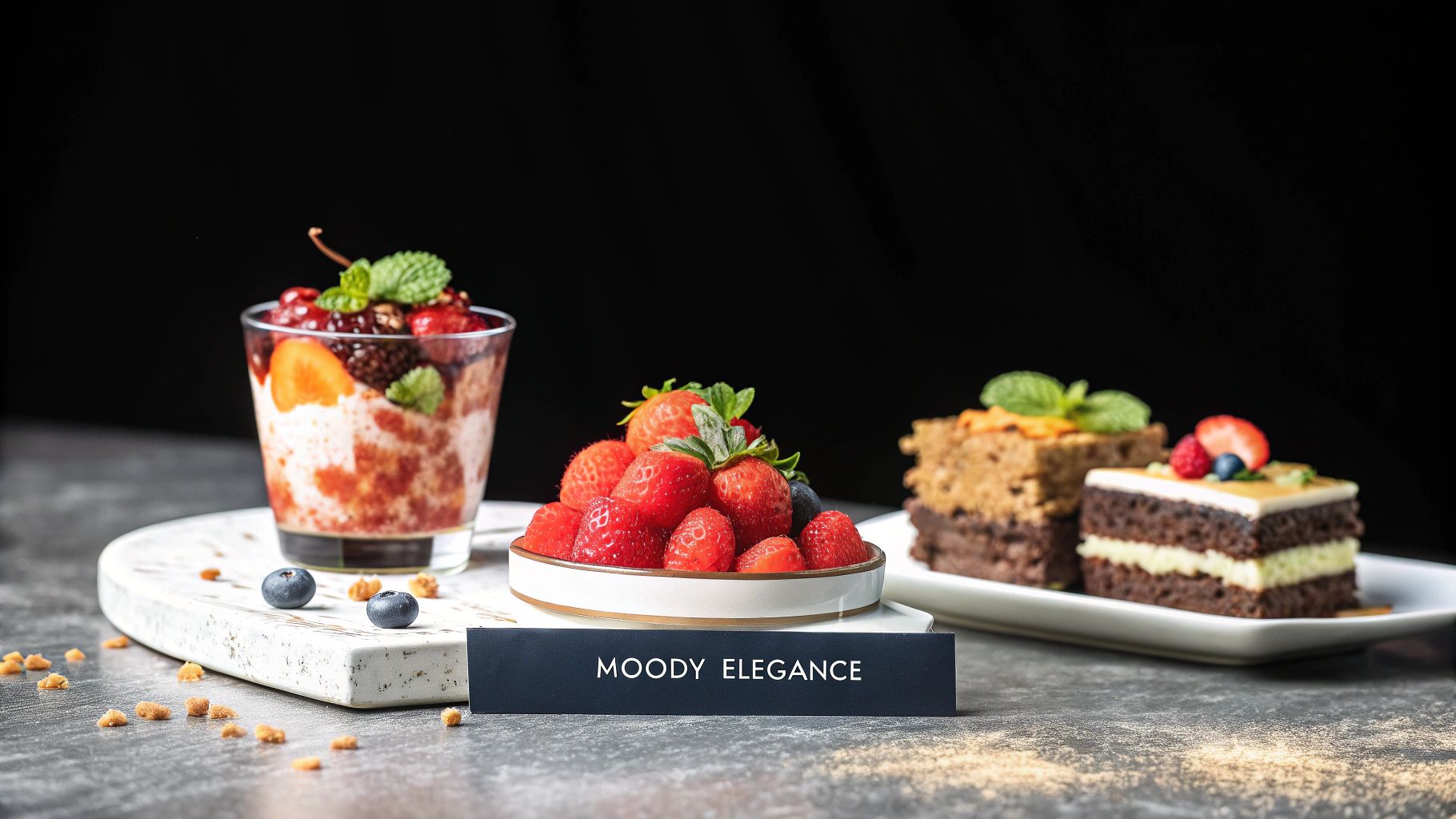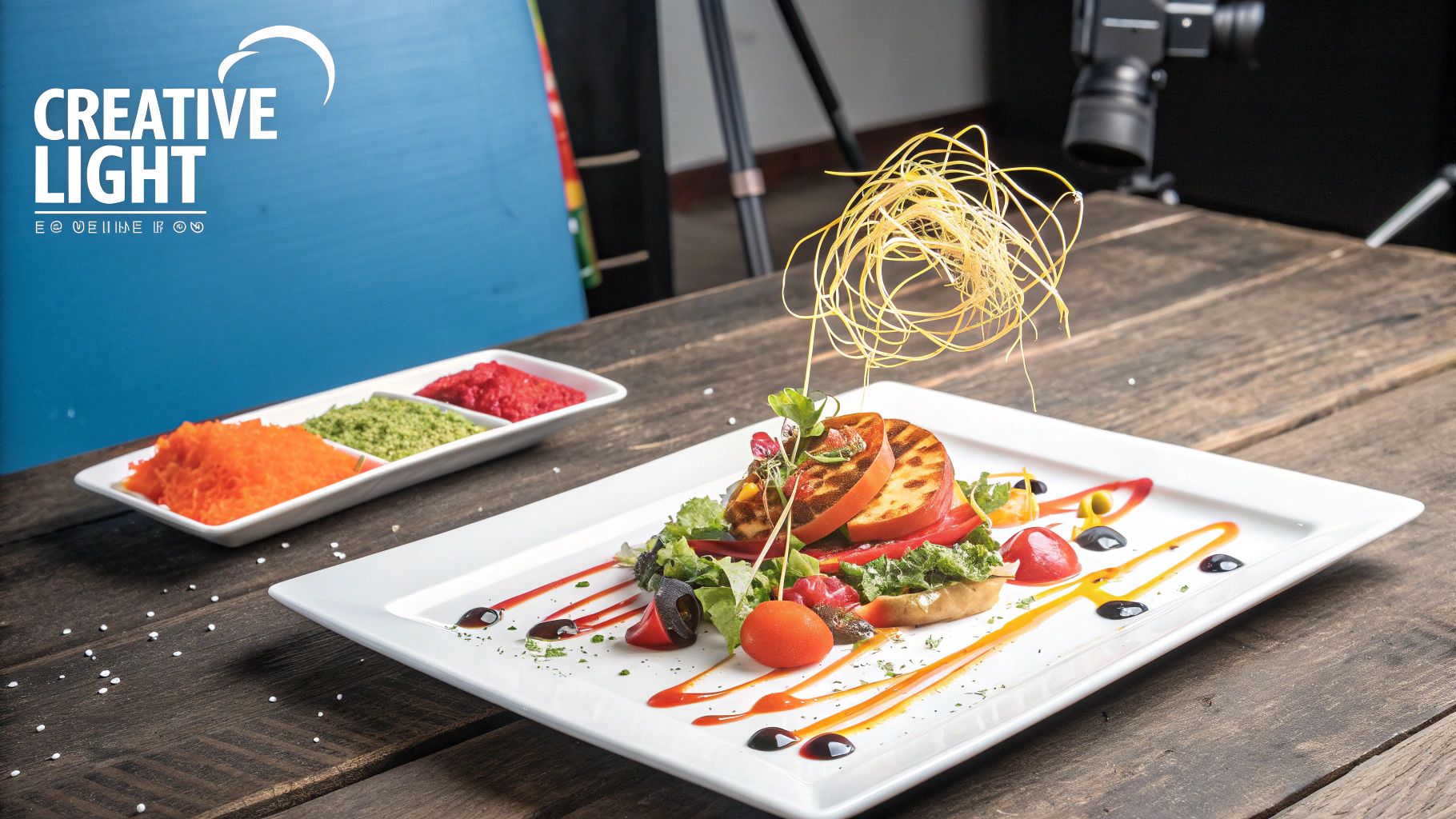Why Recipe Converter Apps Are Revolutionizing Home Kitchens
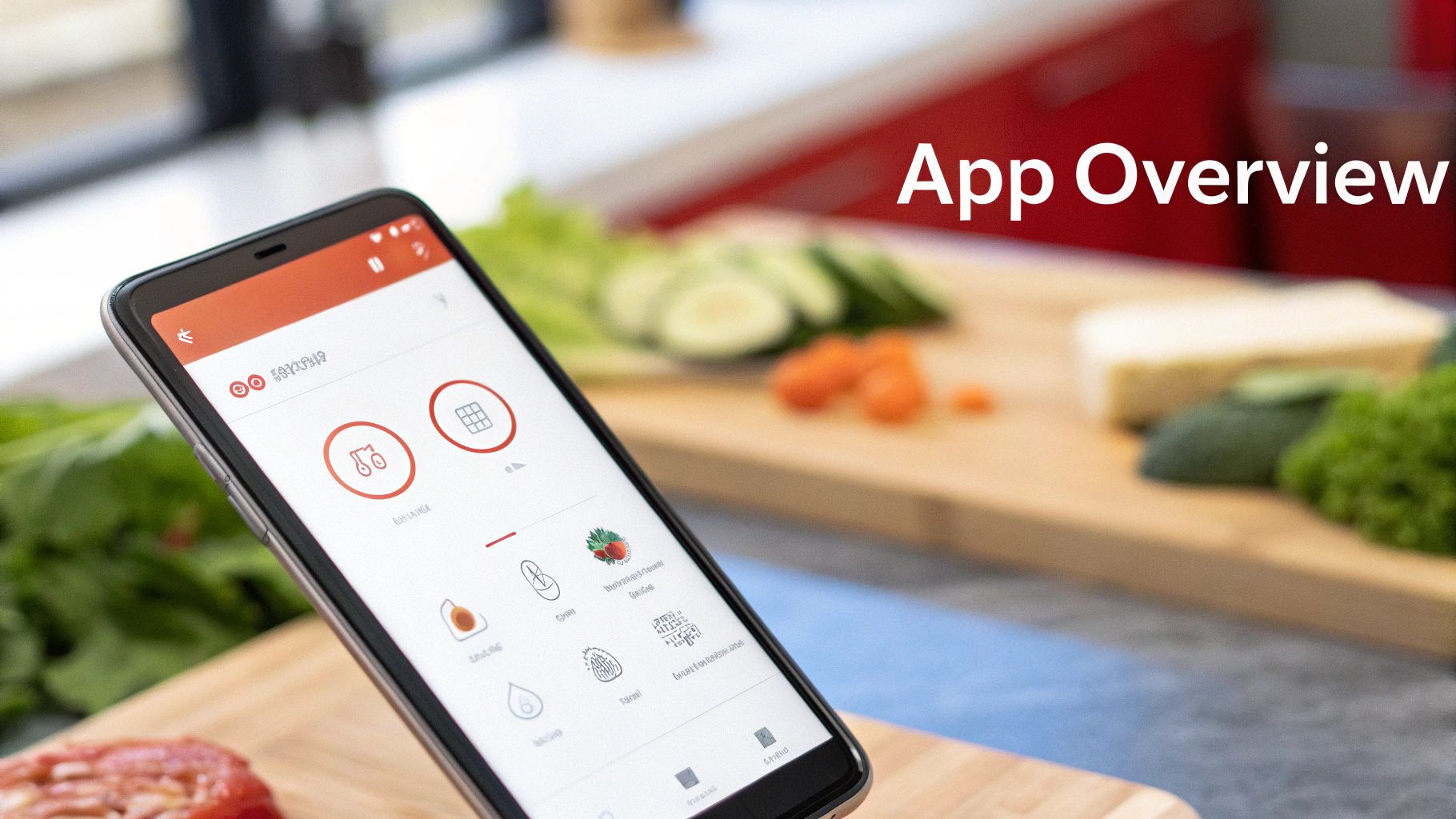
The modern kitchen is more than just a place to cook; it's a tech hub. Recipe converter apps are at the center of this shift, offering solutions to everyday cooking problems. They’re not just digital cookbooks. They're becoming essential tools for home cooks of every skill level. Imagine easily scaling a recipe for a bigger get-together or swapping an ingredient you don't have without ruining the flavor. That's the power of a recipe converter app.
Simplifying Complex Cooking
One of the biggest advantages of these apps is how they simplify cooking. Converting units of measurement (like ounces to grams or cups to milliliters) can be frustrating. Recipe converter apps eliminate this with built-in conversion tools for precision and accuracy.
Many apps also offer ingredient substitution suggestions based on flavor and dietary needs. This means finding a replacement for an allergen or a missing ingredient is no longer a difficult task. This empowers home cooks to try new recipes and confidently make dishes they might have avoided before.
Accessibility and Empowerment
Adaptable recipes have changed the game for home cooks. Cherished family recipes are no longer unusable because of unclear measurements or hard-to-find ingredients. Recipe converter apps make these culinary heirlooms accessible to a new generation.
These apps also democratize culinary expertise, empowering new cooks to tackle complicated recipes with confidence by providing the tools and guidance they need. Driven by health awareness and the growing popularity of home cooking, the market for these apps is booming.
The recipe app market (including converter apps) was valued at USD 724.4 million in 2024. It’s projected to reach USD 2,268 million by 2033, with a CAGR of 13.5%. Free apps (which include many converter apps) held over 73.6% of the market in 2023. You can find more detailed statistics here: Recipe App Market Growth Statistics. This growth shows how valuable these apps are in the kitchen.
Beyond Conversions: A New Relationship With Cooking
Recipe converter apps offer more than just convenience. They're changing how we interact with cooking. By removing obstacles like confusing conversions and ingredient substitutions, these apps make cooking more enjoyable and less intimidating.
They encourage experimentation and creativity, leading to a deeper appreciation for cooking. This newfound confidence allows home cooks to explore new flavors, personalize recipes, and share their creations.
Must-Have Features in Top Recipe Converter Apps
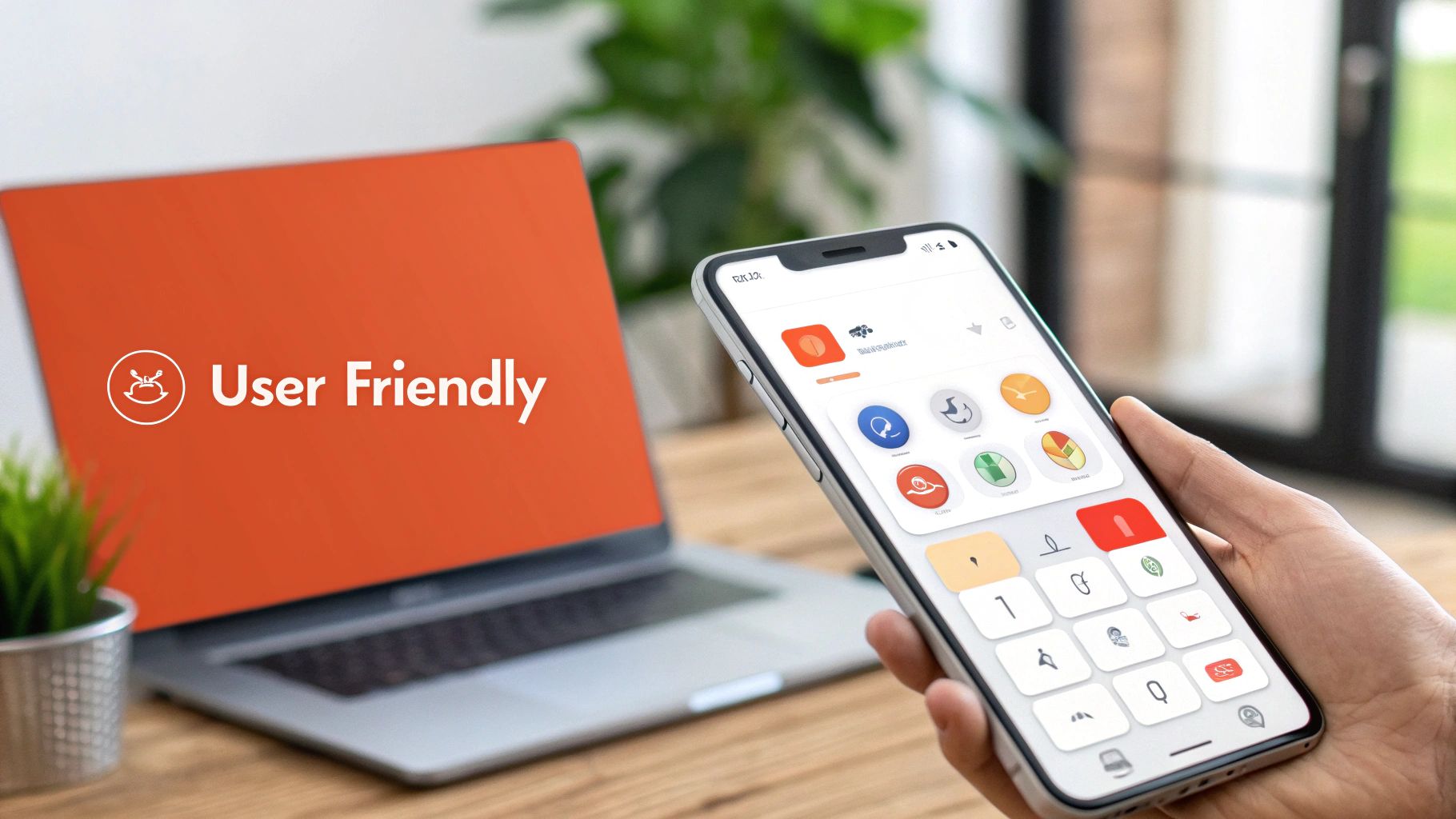
While recipe converter apps are increasingly popular, they're not all equal. The right features can elevate your cooking, while the wrong ones can lead to culinary chaos. Let's explore the essential elements of a truly helpful recipe converter app.
Seamless Measurement Conversion
The core function of any recipe converter app is measurement conversion. A great app handles this seamlessly, letting you switch between units (cups to milliliters, ounces to grams, tablespoons to teaspoons) with ease and accuracy. Imagine effortlessly converting a recipe from metric to imperial without a separate conversion chart.
This is crucial for international recipes or adapting to your available tools. Effective conversion tools eliminate measurement errors and ensure consistent results.
Intelligent Ingredient Substitution
Beyond basic conversions, top apps offer ingredient substitutions. This means suggesting alternatives for ingredients you lack or can't consume due to dietary needs. A good substitution engine considers flavor profiles and the ingredient's role, ensuring the substitute complements the recipe.
You might be interested in: How to master recipe conversions. Intelligent substitutions empower you to experiment, accommodate diets, and cook confidently, even when missing an ingredient.
Intuitive Serving Size Scaling
Another key feature is adjusting serving sizes. A good app doesn't just multiply ingredients; it scales them intelligently, considering how portion changes affect cooking times and ratios to preserve flavor and texture. Doubling a recipe doesn't always mean doubling the cooking time.
An intuitive scaling feature accounts for these nuances, making it easy to adapt recipes for any number of guests.
To help you choose the best app, we've compiled a comparison table:
Top Recipe Converter App Features Comparison
This table compares essential features across popular recipe converter apps to help readers identify which app best meets their specific needs.
| App Name | Measurement Conversion | Ingredient Substitution | Serving Size Scaling | Shopping List Integration | Offline Functionality | Price |
|---|---|---|---|---|---|---|
| Example App 1 | Yes – Supports multiple units | Yes – Offers basic substitutions | Yes – Simple scaling | No | No | Free |
| Example App 2 | Yes – Advanced conversions with fractions | Yes – Intelligent substitutions with flavor profiles | Yes – Advanced scaling with cooking time adjustments | Yes | No | $4.99 |
| Example App 3 | Yes – Basic unit conversions | No | Yes – Basic scaling | No | Yes | $1.99 |
This table highlights the varying features offered by different recipe converter apps. While some offer basic functionality for free, others provide more advanced features at a cost. Consider your specific needs and budget when making your selection.
User-Friendly Interface and Design
Even with powerful features, an app is only effective if it’s easy to use. An intuitive interface is crucial, especially in a busy kitchen. This includes clear navigation, readable text, and a well-organized layout.
The app should be accessible across devices (smartphones, tablets) so you can access recipes anywhere. This ensures helpfulness for everyone, regardless of tech skills.
Additional Features to Consider
While the features above are core, these can enhance usefulness:
- Shopping list integration: Automatically generate lists from converted recipes.
- Offline access: View recipes and conversions without internet.
- Nutritional information: Access calorie counts and macronutrients.
- Recipe storage and organization: Save and organize favorites within the app.
These extras transform a simple tool into a comprehensive kitchen assistant. Choosing an app with the right features will make your cooking more enjoyable and successful.
How AI Is Transforming Recipe Converter Apps
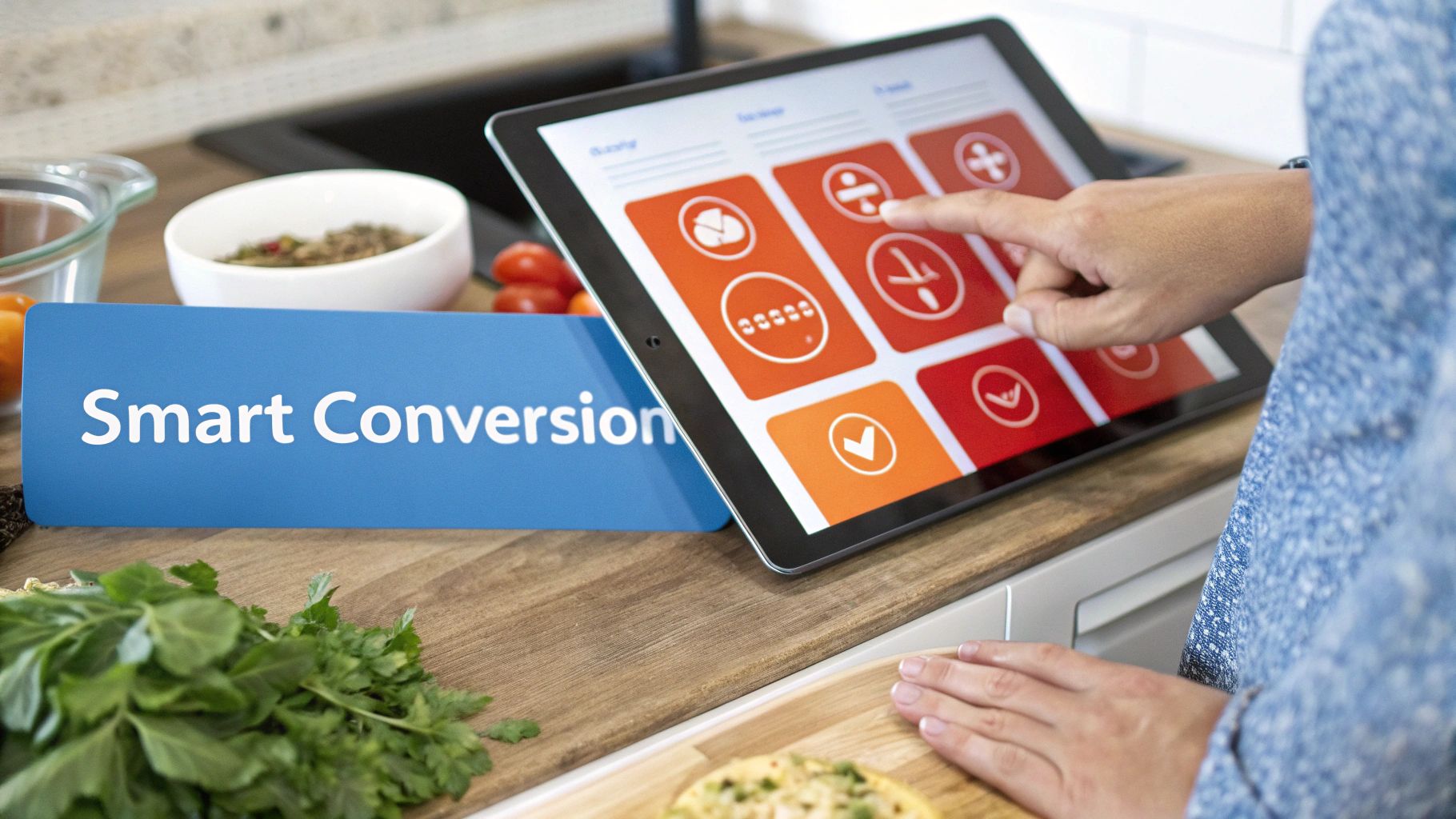
Artificial intelligence (AI) is changing how we use recipe converter apps. These apps are no longer just simple unit converters. They're becoming smart kitchen assistants that enhance our cooking experience. They consider the nuances of cooking that traditional converters miss.
Imagine an app that understands how using gluten-free flour changes a cake's rise. Or how doubling a spice impacts the overall flavor. This is the power of AI in the kitchen.
Understanding the Impact of AI
AI makes recipe converter apps more intuitive and helpful. Machine learning algorithms, a subset of AI, analyze huge amounts of recipe data and cooking techniques. This helps the app recognize the complex relationships between ingredients and cooking processes.
As a result, these apps can predict the outcome of substitutions and recipe scaling with greater accuracy. They're less like simple calculators and more like experienced chefs offering guidance.
One key factor driving the success of recipe apps, including recipe converters, is the integration of AI and machine learning. These technologies allow apps to give personalized recipe recommendations. These recommendations are based on user preferences, dietary needs, and even what ingredients a user has on hand. For example, AI can analyze your cooking habits and suggest meal plans tailored to you. The recipe app market is predicted to reach $2.32 billion by 2029. It's expected to grow at a CAGR of 13.2%, with AI-driven personalization being a major reason for this growth. You can find more statistics here: Recipe App Market Growth. Features like smart kitchen device integration and voice assistant compatibility also add convenience and make cooking more interactive.
AI-Powered Features: Revolutionizing the Cooking Experience
AI is bringing exciting new features to recipe converter apps:
-
Natural Language Processing (NLP): NLP lets apps understand handwritten or typed recipes, even with unclear instructions or abbreviations. This makes digitizing family recipes easier and more accurate. Think about an app that can decipher your grandmother's handwritten cookie recipe, preserving family traditions.
-
Computer Vision: This technology helps apps extract recipes from printed cookbooks or online images. It recognizes ingredients, instructions, and even pictures of dishes. Then, it converts them into a digital format you can edit and use. This reduces manual entry and errors.
Personalized Cooking Assistance
AI also enables these apps to learn your preferences. If you regularly substitute coconut oil for butter, the app will remember and suggest it next time. This personalized approach also adjusts serving sizes, making sure your meals are perfect for your household.
This personalized approach transforms the app into a personal kitchen assistant. It anticipates your needs and takes the guesswork out of cooking. This creates a more efficient and enjoyable cooking experience.
Finding Your Perfect Recipe Converter App Match
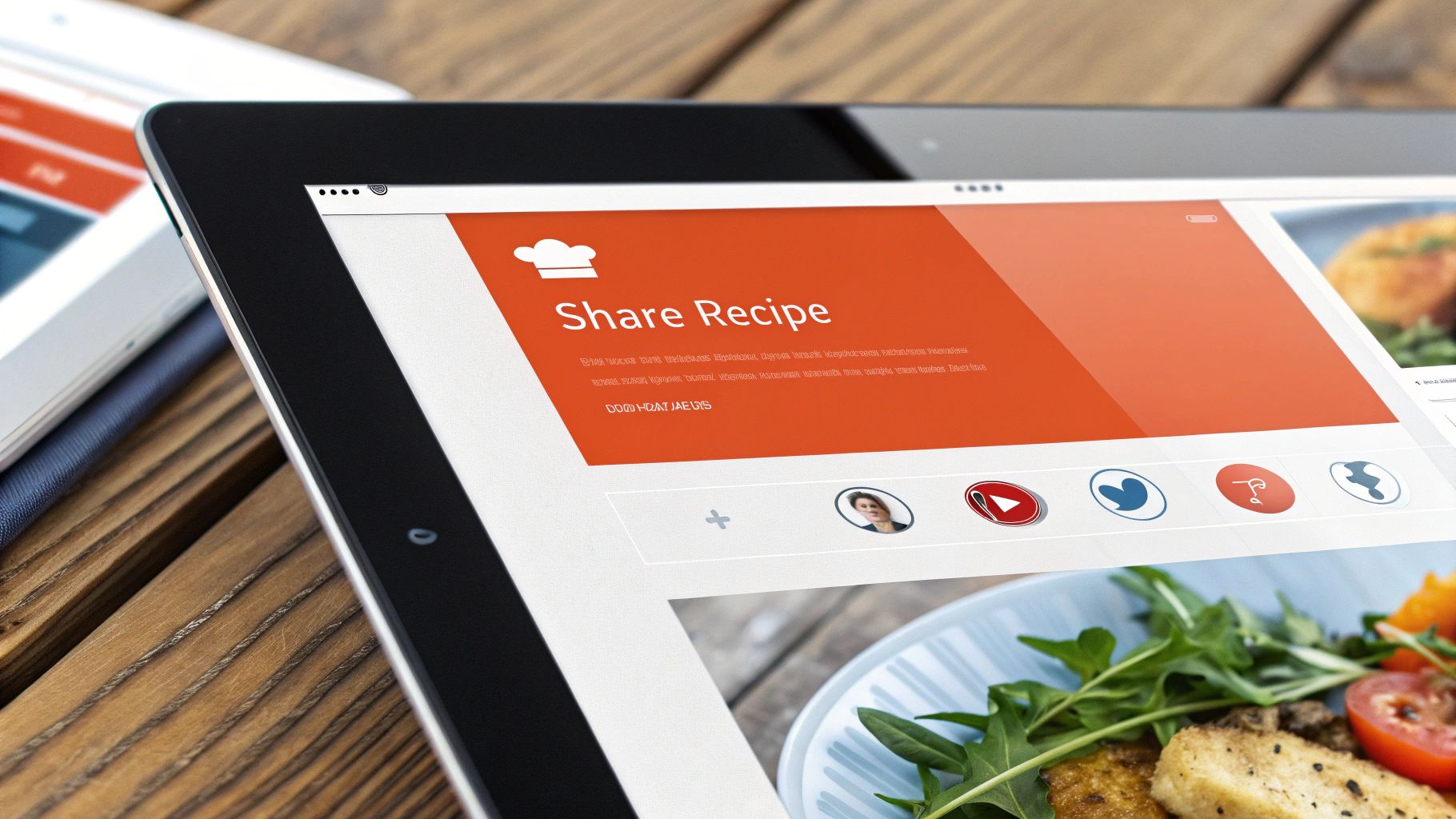
With so many recipe converter apps available, finding the right one can be a challenge. This section will help you explore the options and find the perfect fit for your cooking needs. We'll move past the marketing jargon and focus on what really matters. AI can greatly enhance recipe converter apps, much like it has with AI-Powered Email Marketing.
Key Considerations for Choosing an App
The best recipe converter app is the one that works best for your cooking style. Here are some questions to consider:
- How often do you cook? If you're a casual cook, you might need a simpler app than someone cooking daily.
- What types of recipes do you use? Bakers might prioritize weight conversions, while others may focus on substitutions.
- Do you have any dietary restrictions? Look for apps with robust substitution features if you manage allergies or special diets.
- What's your budget? Apps range from free (with ads) to paid subscriptions. Think about the features you need and if they are worth the cost.
Evaluating App Reliability and User Experience
Don't rely solely on star ratings. Here's a more thorough approach:
- Update Frequency: Regular updates mean the developers are actively working on improvements and fixing bugs.
- Accuracy Testing: Do the conversions and substitutions work correctly? User reviews and forums can offer helpful insights.
- User Feedback Responsiveness: Do the developers respond to user comments and concerns? This shows they care about improving the app.
Privacy and Data Security
Sharing recipes often involves sharing personal information. Keep these privacy considerations in mind:
- Data Collection Practices: What data does the app collect and how is it used? A clear privacy policy is a must.
- Recipe Sharing Options: Do you want to share your recipes publicly or privately? Choose an app that gives you control.
Choosing the Right Investment Model
The best investment model depends on how much you'll use the app:
- Free with Ads: Great for casual cooks, but ads can be distracting.
- One-Time Purchase: You get all the features upfront, but there might not be ongoing updates.
- Subscription: This option provides ongoing access to new features and updates. Best for frequent cooks.
By considering these points, you can find a recipe converter app that truly makes cooking easier. You’ll spend less time on the technical details and more time enjoying the creative process. The right app is an investment in making cooking simpler, more efficient, and more enjoyable.
Global Adoption Trends in Recipe Converter Apps
Recipe converter apps are seeing a surge in popularity worldwide. However, this growth isn't consistent across all regions. Regional differences in food cultures and cooking practices play a significant role. This exploration delves into how these apps cater to diverse culinary traditions, ranging from the precision of European cuisine to the ingredient-focused approach of Asian cooking. For tips on recipe organization, check out this helpful resource: How to master recipe organization.
Regional Adaptations and Feature Preferences
Different regions prioritize different features in recipe converter apps. In Latin America, where large family gatherings are common, scaling functionality is highly valued. This allows cooks to easily adjust recipes for larger groups, maintaining the correct flavor balance and ingredient ratios.
In areas where seasonal ingredients are key, ingredient substitution features are crucial. These features empower cooks to modify recipes based on the availability of fresh, seasonal produce.
Health-focused adaptations are a priority for health-conscious communities. These features enable users to easily adjust recipes to meet specific dietary needs, such as reducing sugar or substituting ingredients for healthier alternatives. These regional variations highlight the evolution of recipe converter apps from simple tools to personalized culinary assistants.
Beyond Basic Conversion: Addressing Cultural Cooking Needs
These apps are moving beyond simple unit conversions and tackling the intricacies of traditional recipes. Many cultural dishes rely on experience and intuition rather than precise measurements. Recipe converter apps are bridging this gap by offering specialized functions for these unique recipes.
Some apps, for instance, incorporate features to handle non-standard units of measurement common in specific cultures. Others offer guidance on traditional cooking techniques. This evolution makes it easier for users to preserve and share their cultural culinary heritage.
Market Growth and Future Trends
The global recipe app market, including recipe converters, is experiencing impressive growth. The market is expected to hit USD 6.41 billion by 2025, up from USD 5.80 billion in 2024. This growth is driven by factors like the increasing adoption of smart kitchen appliances, growing health awareness, and AI-powered personalization. For a detailed market analysis, see: Recipe App Market Research.
Furthermore, the market is projected to reach USD 14.27 billion by 2033, with a CAGR of 10.52%. Free apps, with their easy accessibility, currently hold the largest market share. Word-of-mouth marketing plays a vital role in their popularity.
The Asia-Pacific region, with its increasing internet and mobile penetration, is expected to witness significant growth. Innovations in AI and community features that enhance user interaction will further fuel growth in this region. These trends are shaping the future of recipe converter apps, creating exciting new ways to explore and experience cooking across diverse cultures.
To understand regional growth patterns in more detail, let's examine the following table:
The table below, "Recipe App Market Growth by Region (2024-2033)", provides a regional breakdown of projected market growth for recipe apps. It offers insights into regional adoption trends, growth rates, and key drivers.
| Region | Current Market Size | Projected Growth Rate | Estimated Market Size by 2033 | Primary Growth Drivers |
|---|---|---|---|---|
| North America | USD 2.1 billion | 9.8% | USD 5.2 billion | High disposable income, tech adoption, health & wellness trends |
| Europe | USD 1.5 billion | 8.5% | USD 3.3 billion | Growing interest in international cuisines, smart kitchen integration |
| Asia-Pacific | USD 1.2 billion | 12.2% | USD 3.8 billion | Rising internet penetration, increasing smartphone use, expanding middle class |
| Latin America | USD 0.6 billion | 10.5% | USD 1.4 billion | Growing urbanization, increasing disposable income, cultural emphasis on food |
| Rest of the World | USD 0.4 billion | 7.9% | USD 0.6 billion | Increasing internet access, growing awareness of recipe apps |
As the table indicates, the Asia-Pacific region is expected to experience the fastest growth, driven by increased internet and mobile usage. North America currently holds the largest market share, fueled by high disposable income and strong tech adoption. Across all regions, the rising interest in health and wellness, coupled with the convenience and versatility of recipe apps, are key factors contributing to market expansion.
Recipe Converter Apps in the Smart Kitchen Ecosystem
The smart kitchen has arrived. Recipe converter apps are at the heart of this connected culinary experience. These apps go beyond simple unit conversions; they interact with your appliances, simplifying cooking and making complex recipes easier to manage.
Seamless Integration With Smart Devices
Imagine baking a cake. You use your recipe converter app to adjust the recipe for a different pan size. This adjusted recipe automatically transfers to your smart oven, preheating it to the correct temperature. The app also connects to your digital scale, guiding you through each ingredient with precise measurements. This eliminates measurement errors and ensures consistent results. This seamless integration between app and appliance takes the guesswork out of cooking.
Learn more in our article about How to master your recipe planning. As smart kitchen technology advances, recipe converter apps are transforming from single-use tools into kitchen command centers. They bridge the gap between traditional recipes and modern appliances, translating even handwritten family recipes into a language your smart oven understands.
Hands-Free Cooking With Voice Assistants
This integration also includes voice assistants. Now you can cook entirely hands-free, following complex instructions without touching your phone or tablet. This is especially helpful when working with messy ingredients or juggling multiple steps. The app guides you, offering real-time conversions and substitutions as you cook. This allows you to focus on the creative side of cooking, not the technical details.
Real-World Transformations in the Kitchen
This connected system changes how we cook. Imagine a busy parent making dinner for a family with varying dietary needs. A recipe converter app quickly adapts a recipe to be gluten-free and adjusts it for unexpected guests. The app communicates with their smart slow cooker, automatically changing the cooking time based on the modified recipe. These real-world examples demonstrate how these app integrations are making cooking more efficient and accessible, removing hurdles and enhancing the joy of home cooking.
Reclaiming Creativity in the Kitchen
The ultimate goal of these smart integrations is to make cooking more intuitive and enjoyable. Recipe converter apps handle the technical details–conversions, substitutions, scaling, and appliance communication–allowing home cooks to focus on the pleasure of creating and sharing delicious food. They shift the focus from calculations to creativity. This empowers both experienced and novice cooks to explore new flavors and create dishes they are proud of.
Ready to experience the future of cooking? Discover Recify, the recipe converter app that simplifies recipe management and organization. Recify allows you to save recipes from any online source, convert them to an easy-to-follow format, and create your own digital cookbook. Explore Recify and transform your cooking experience.
